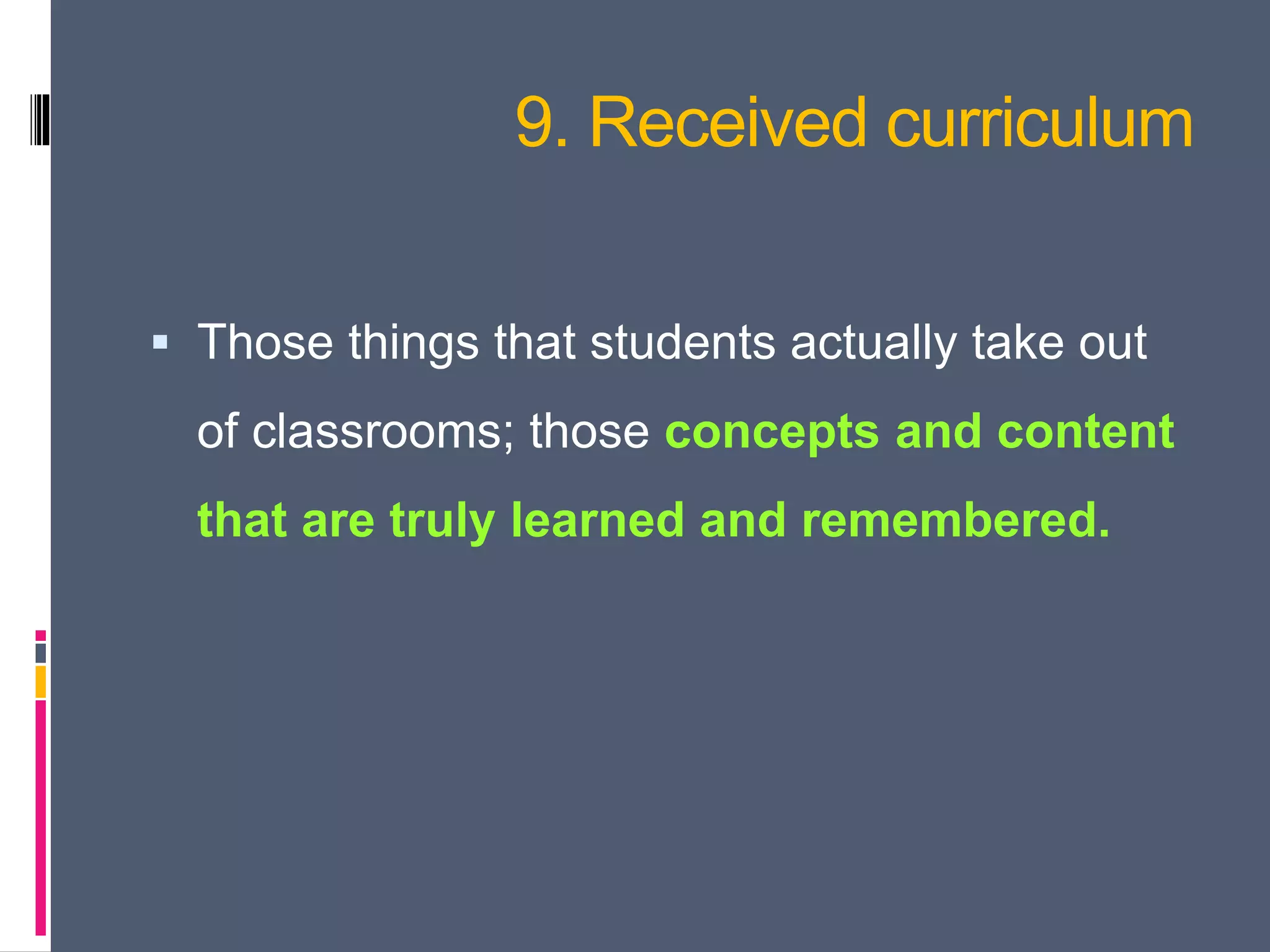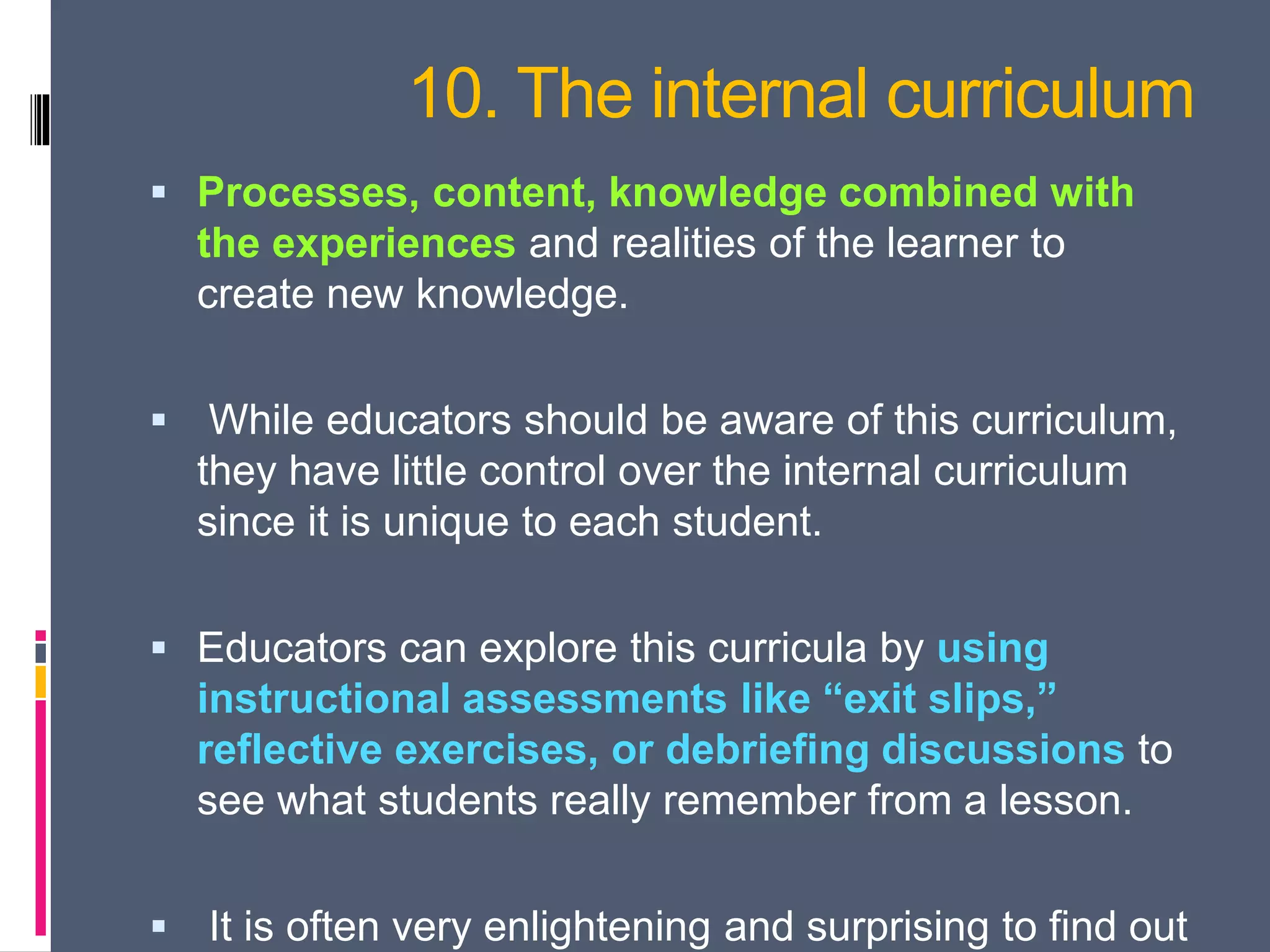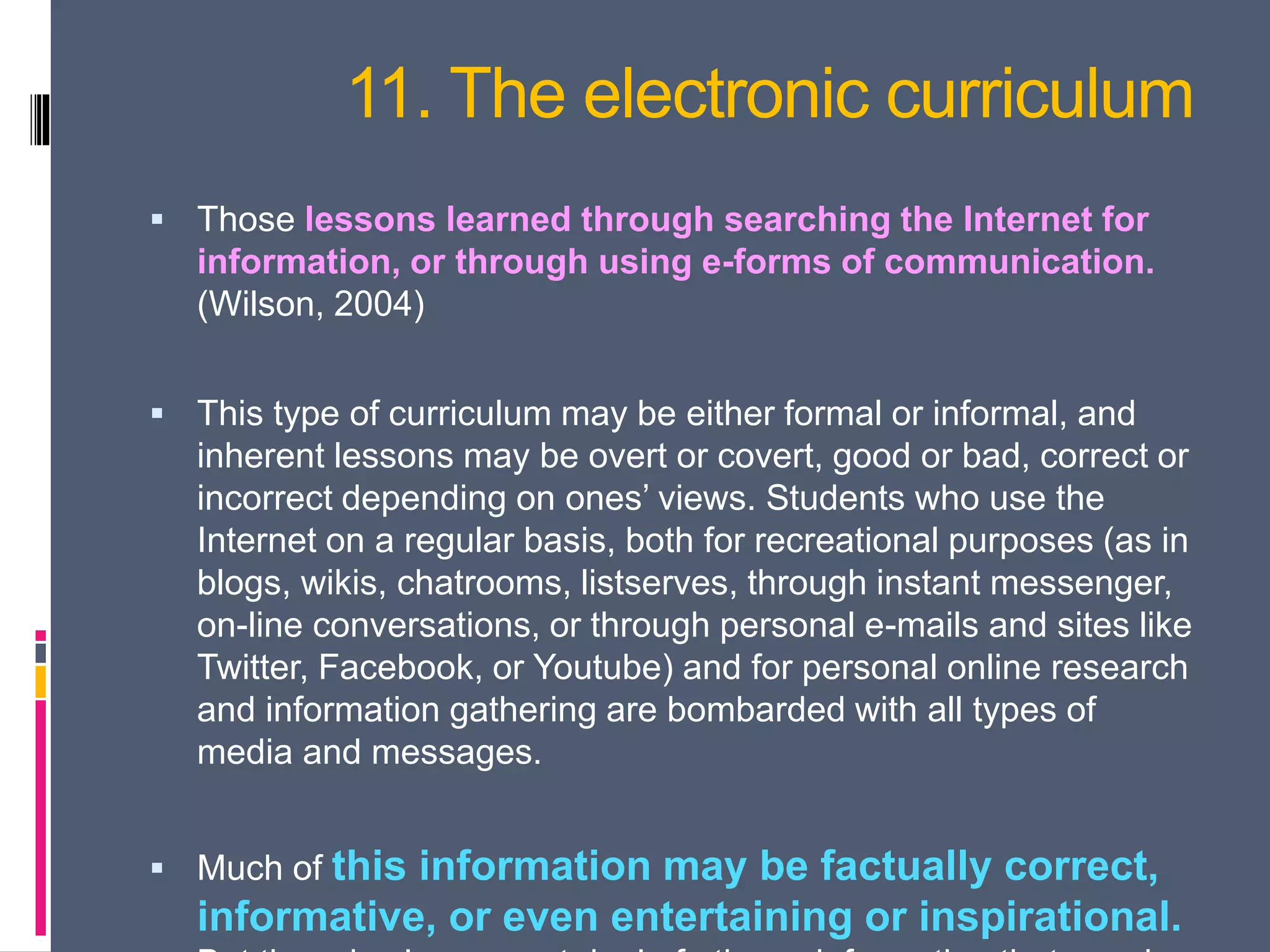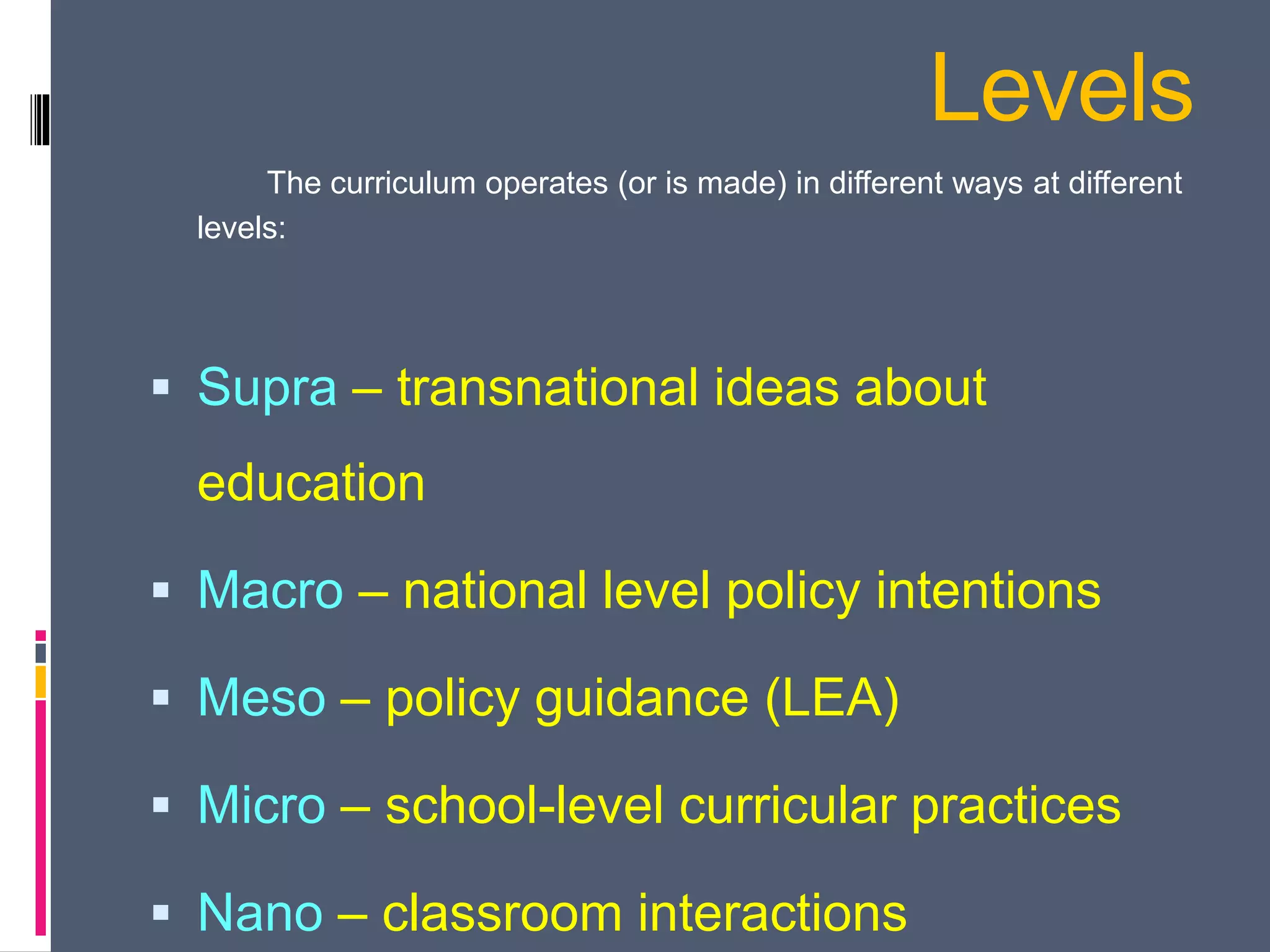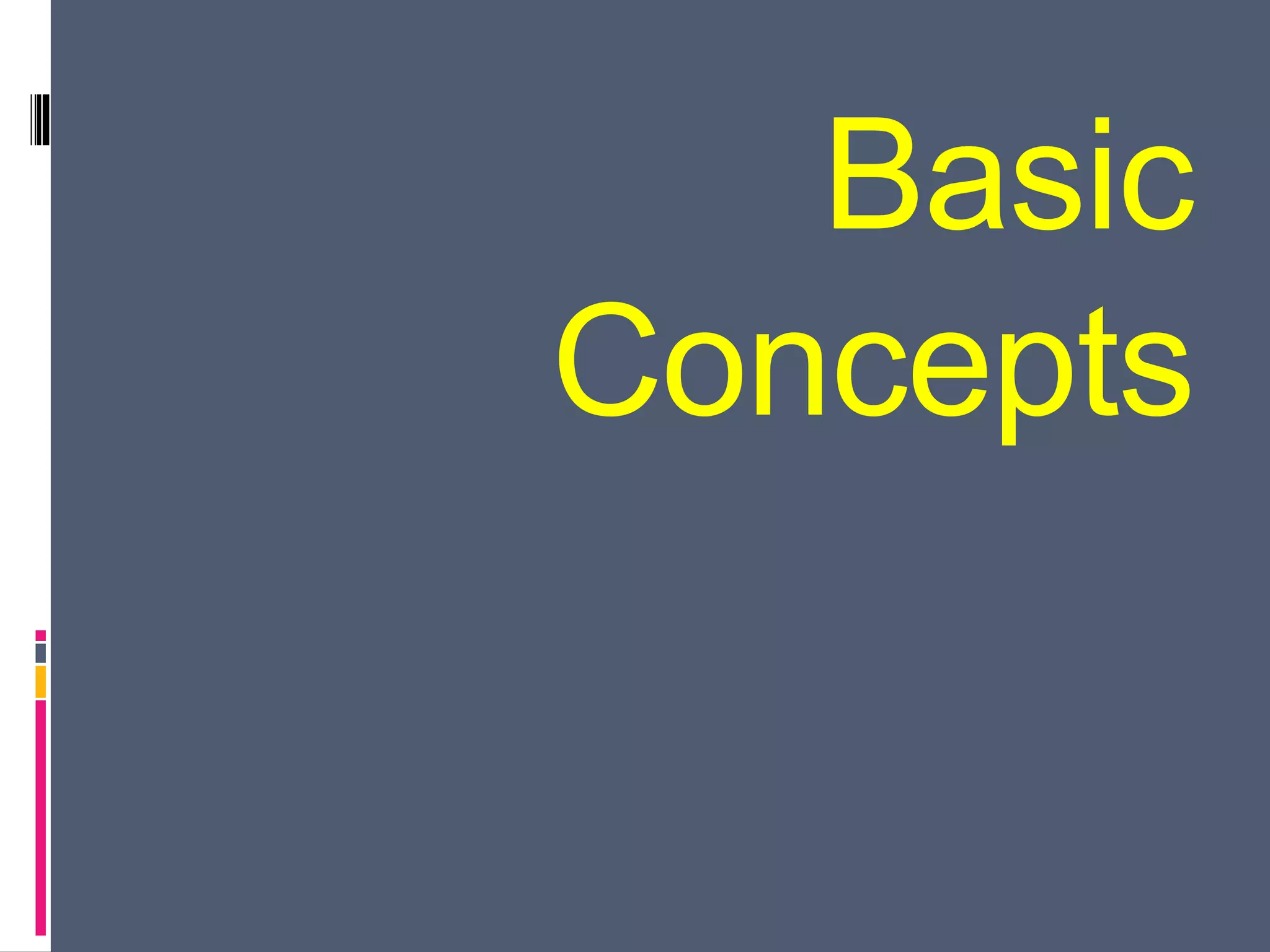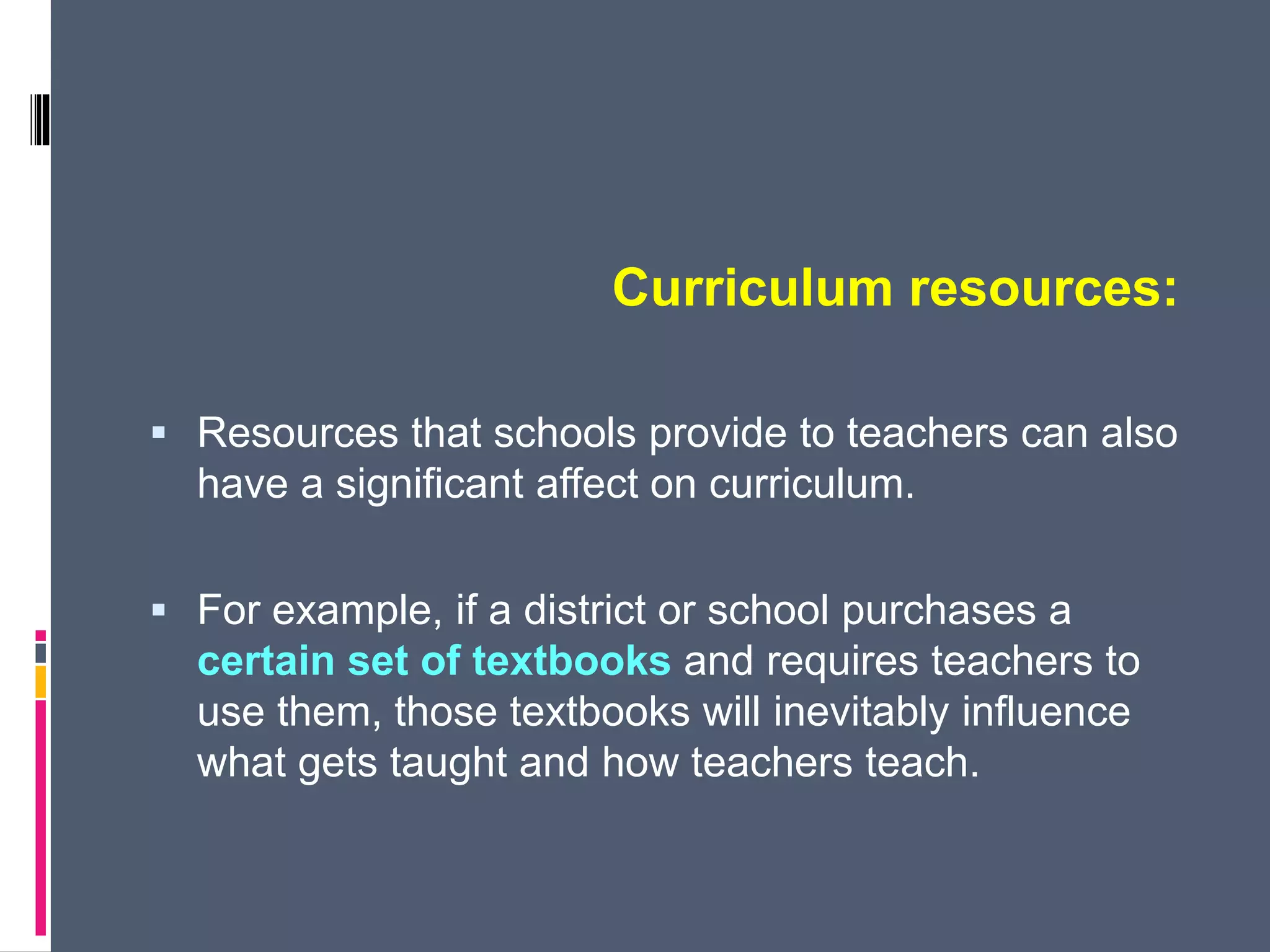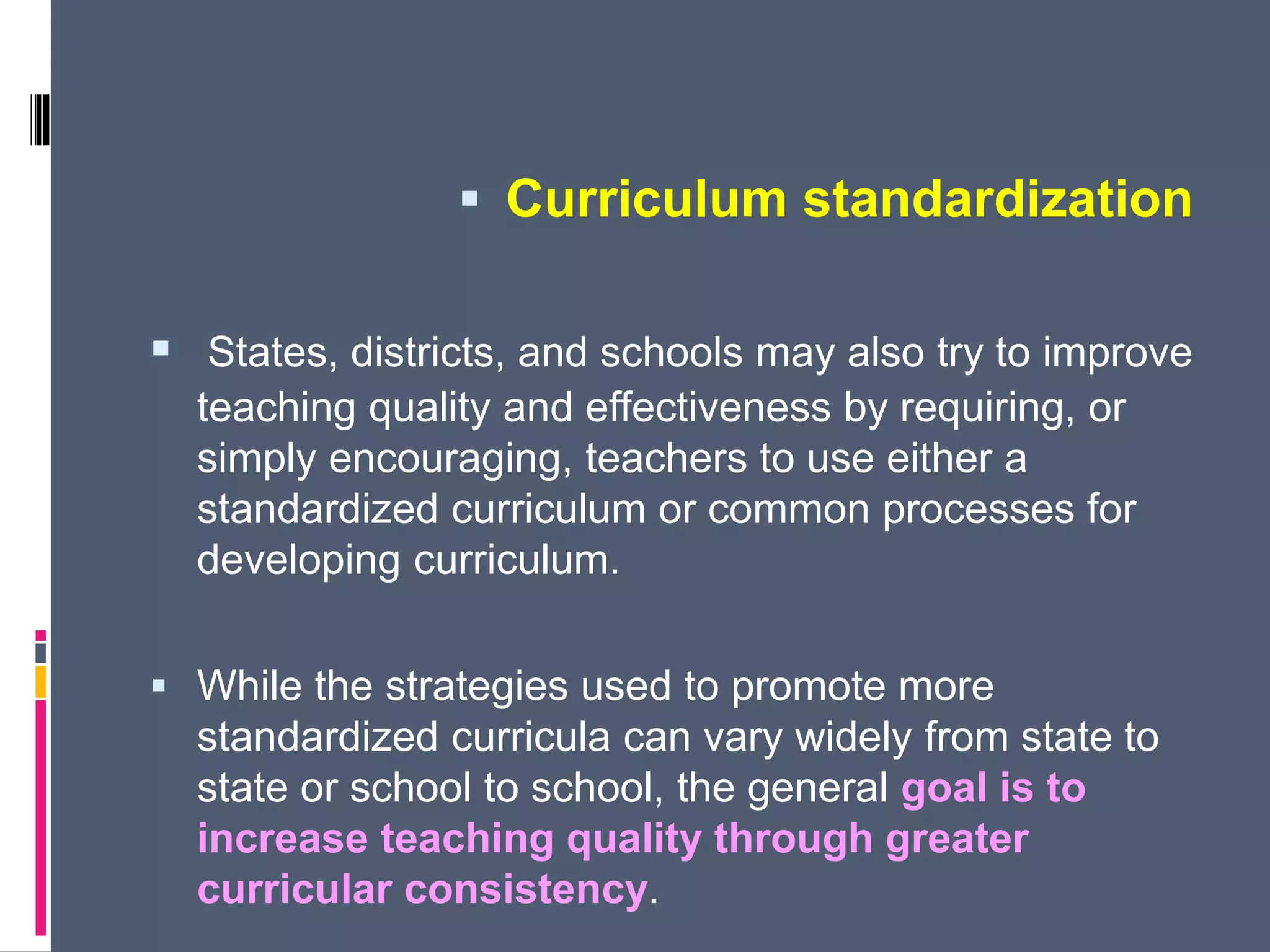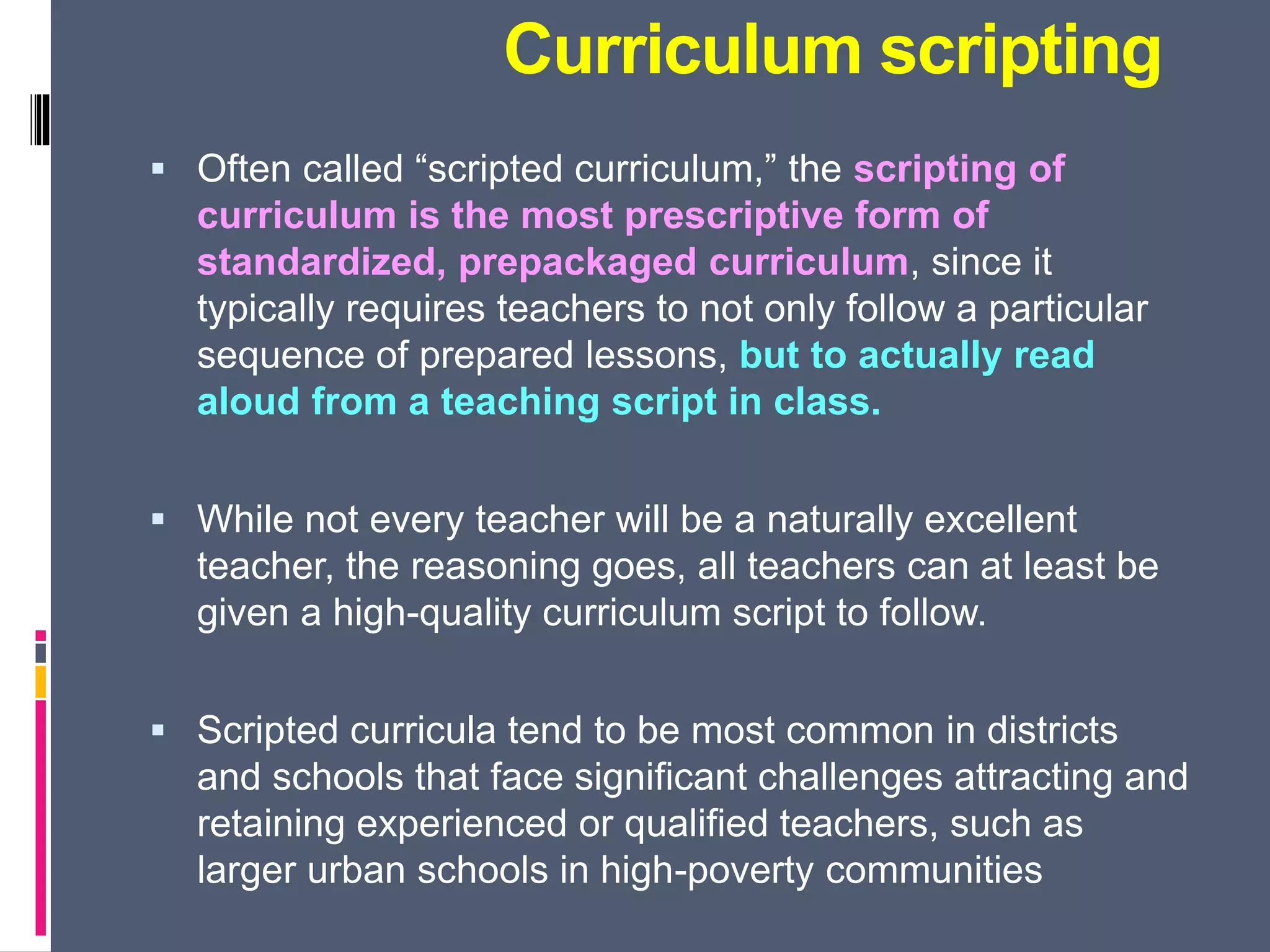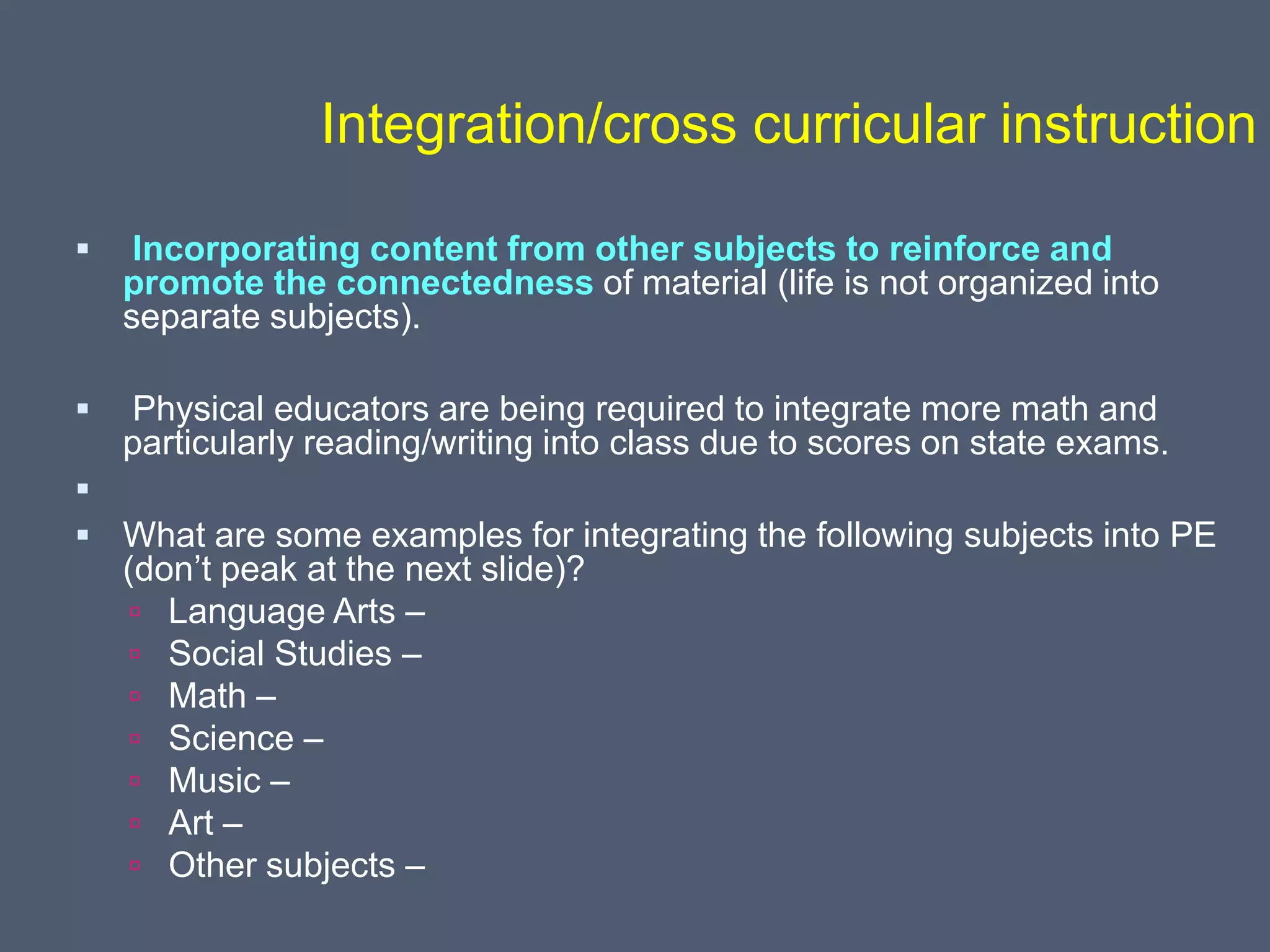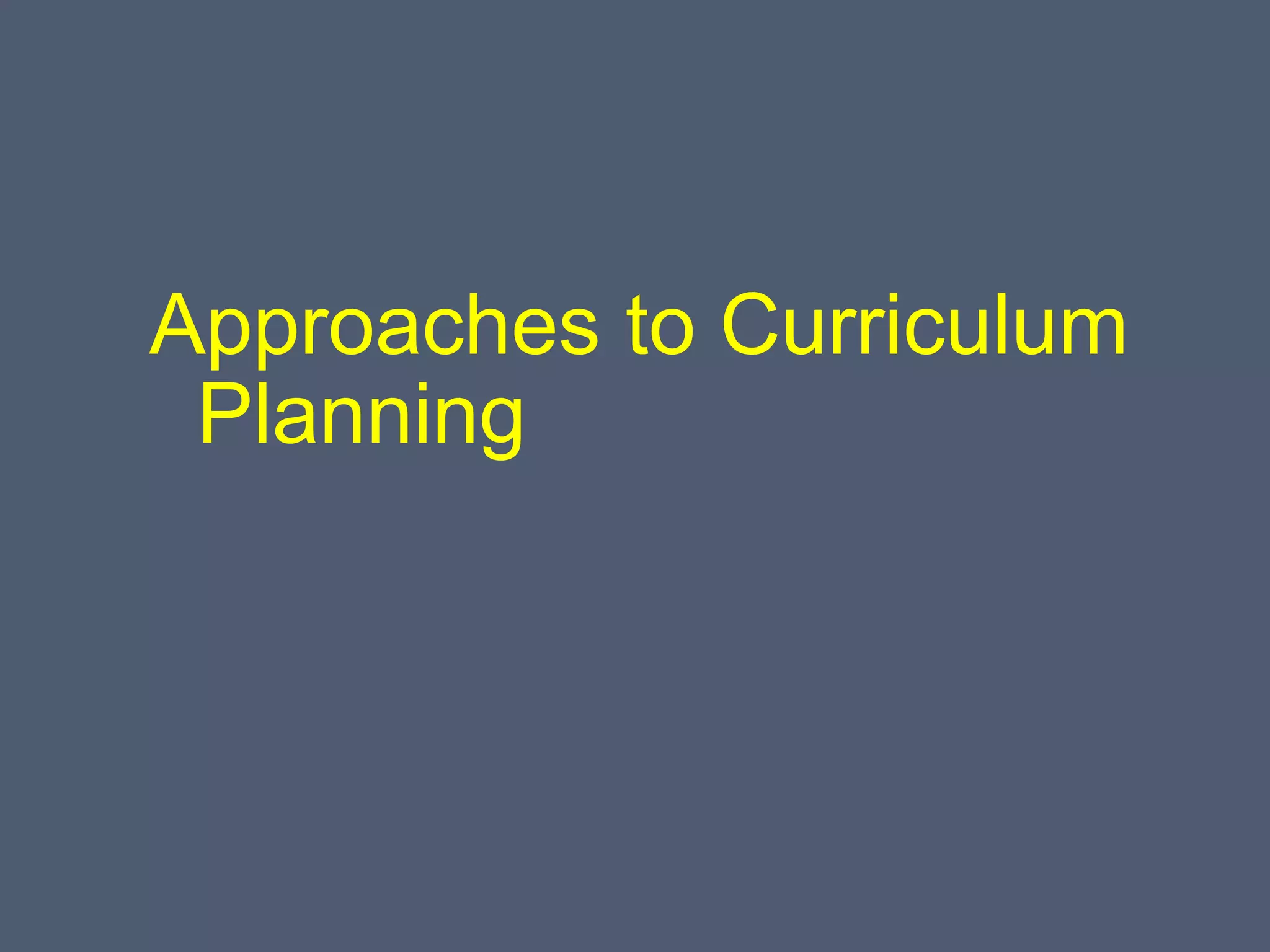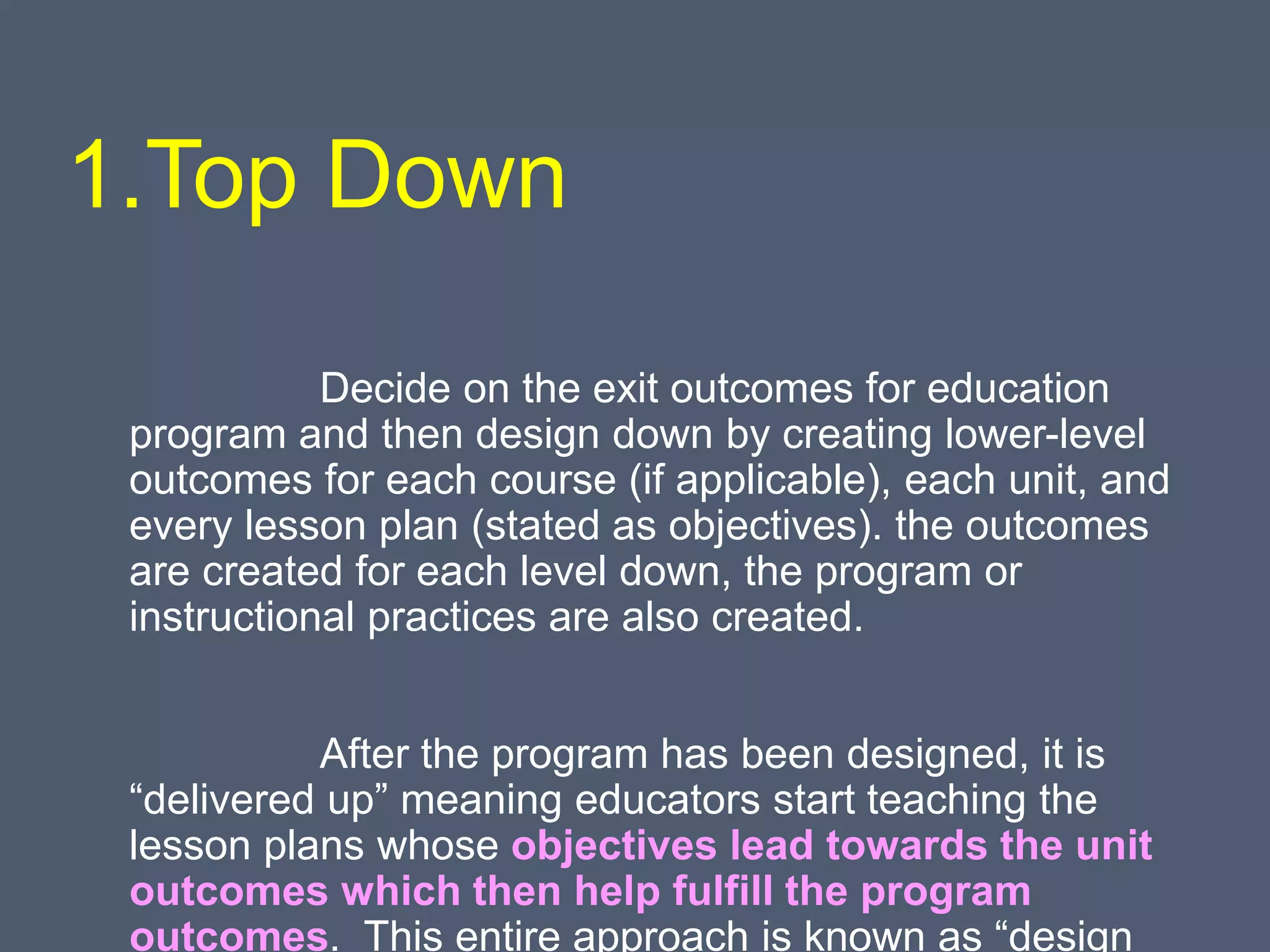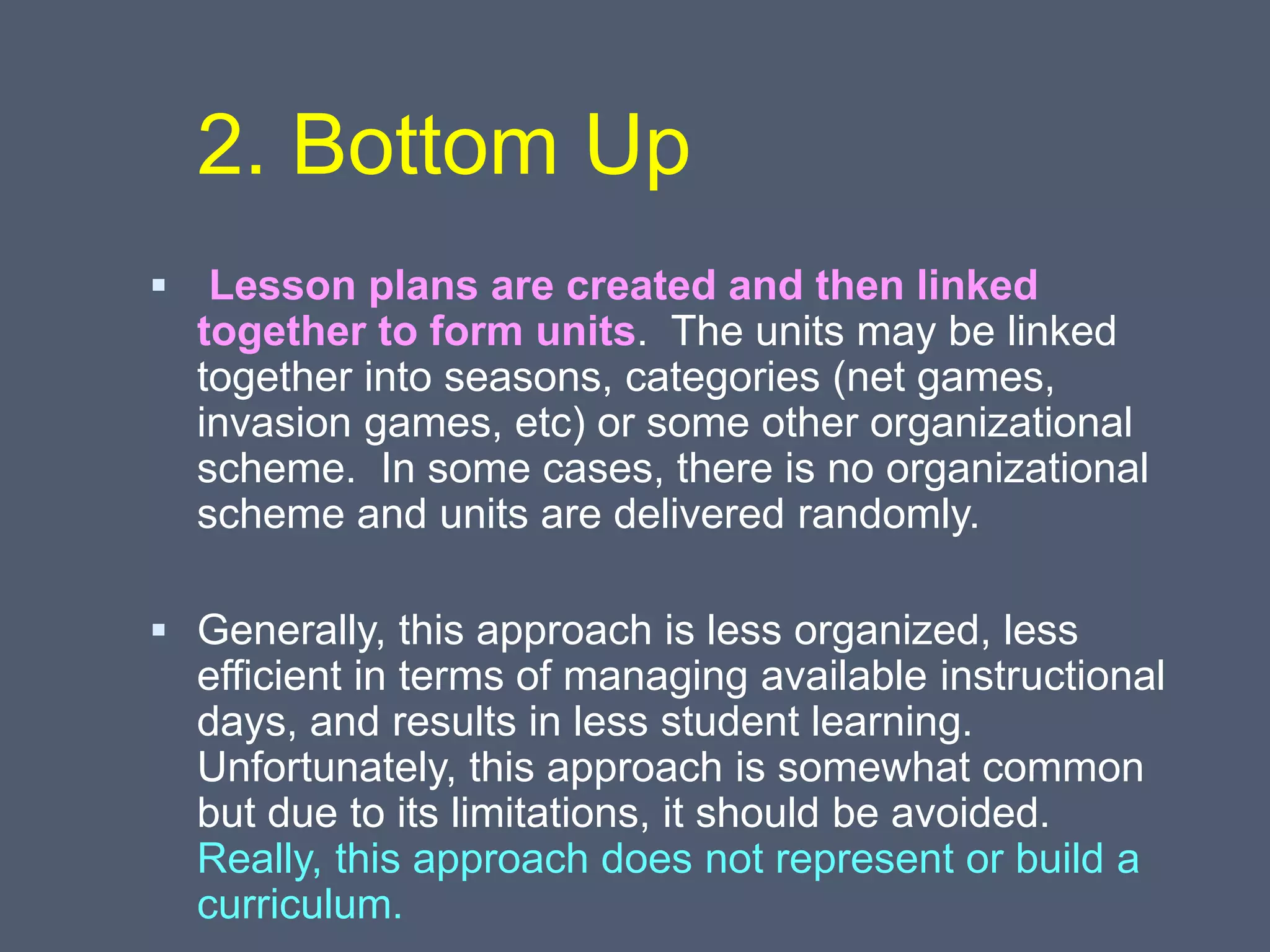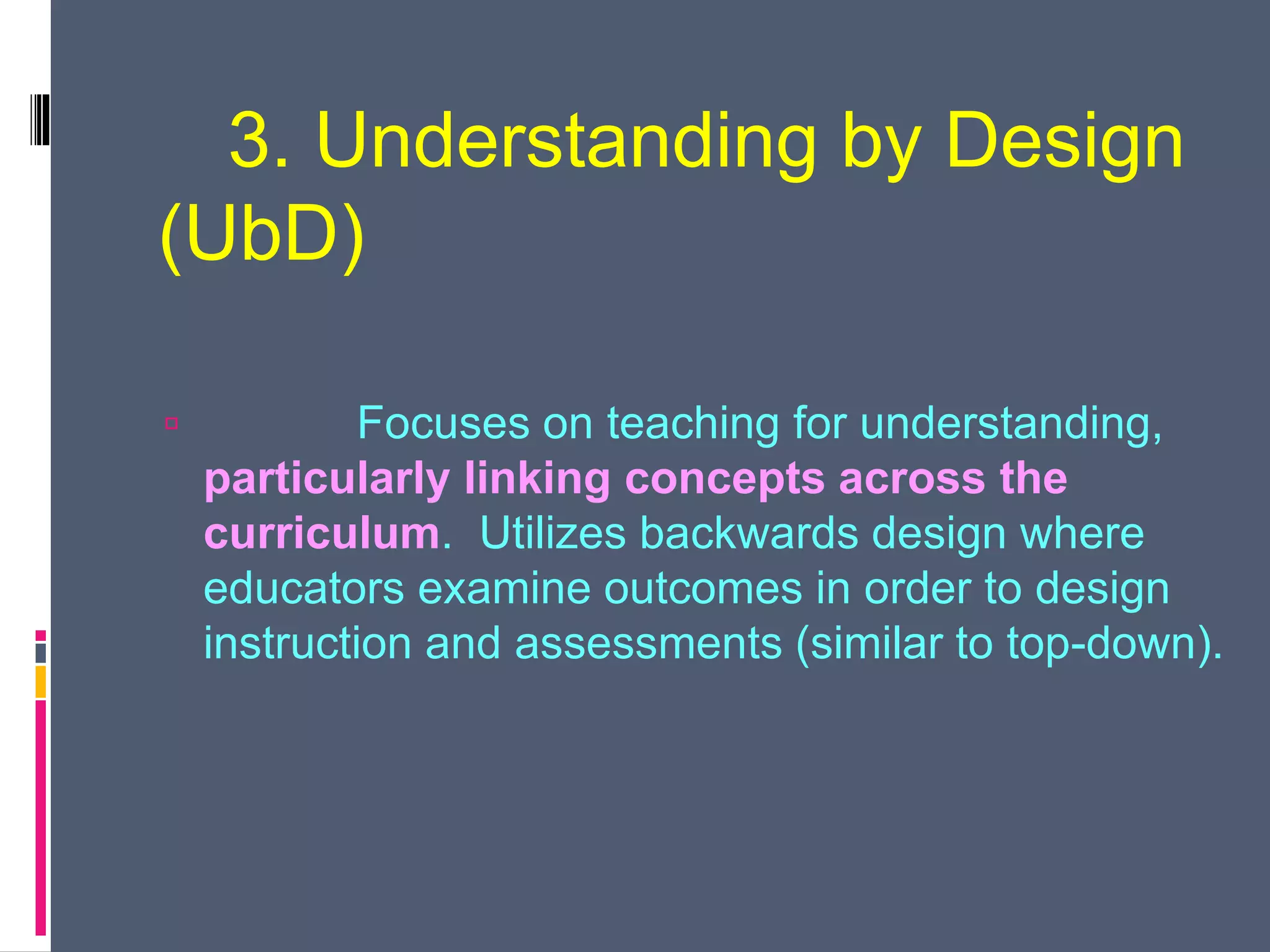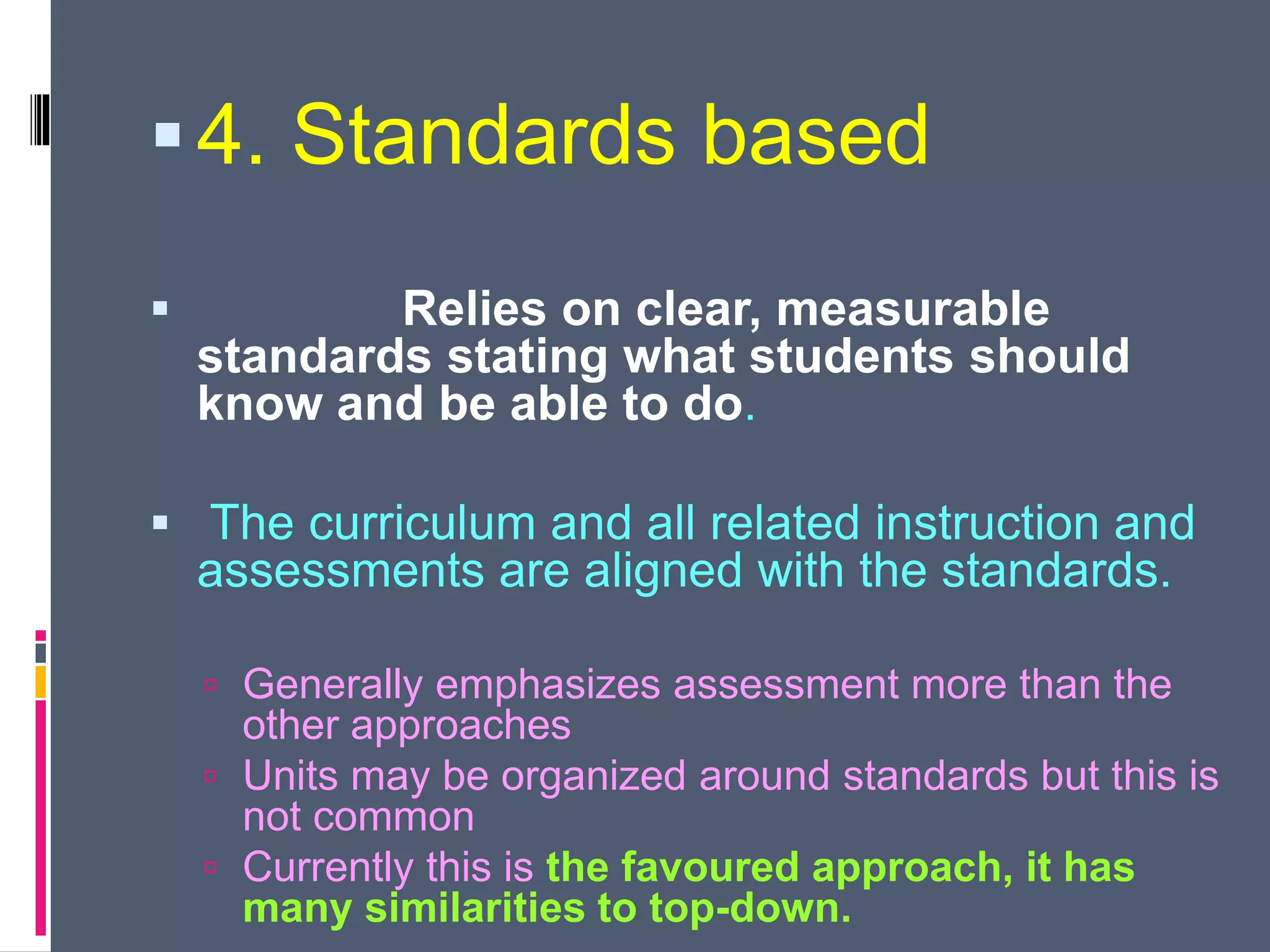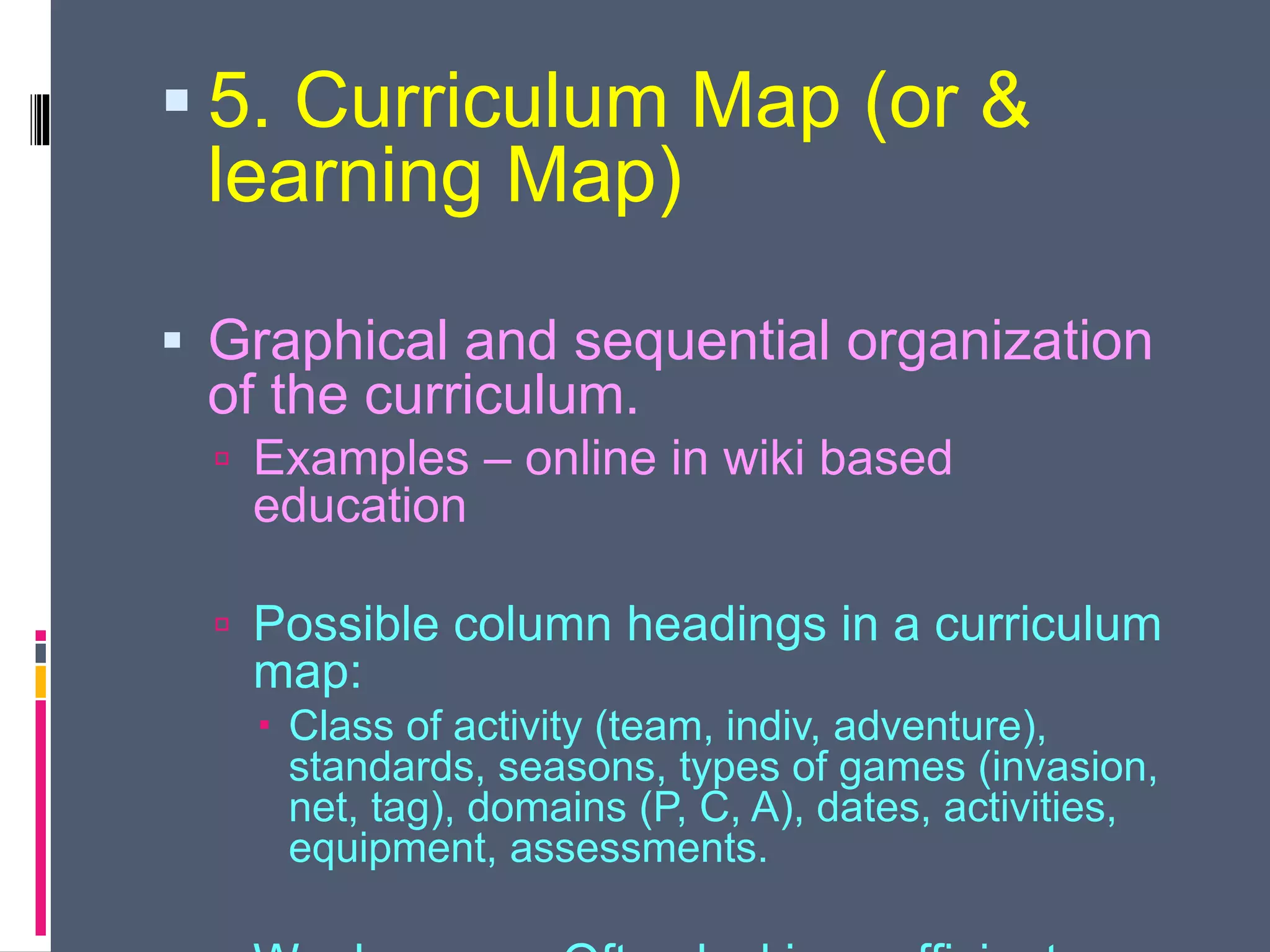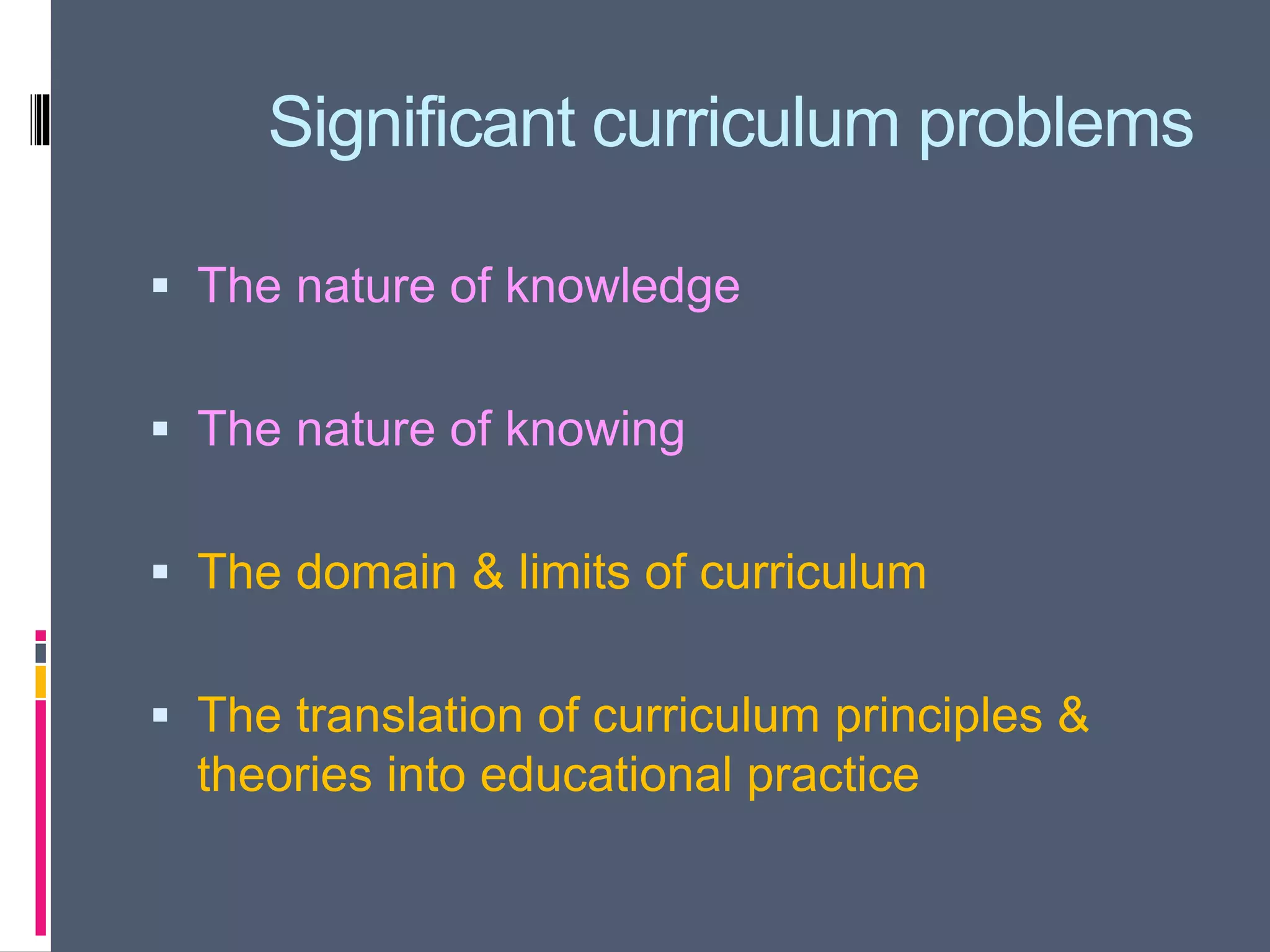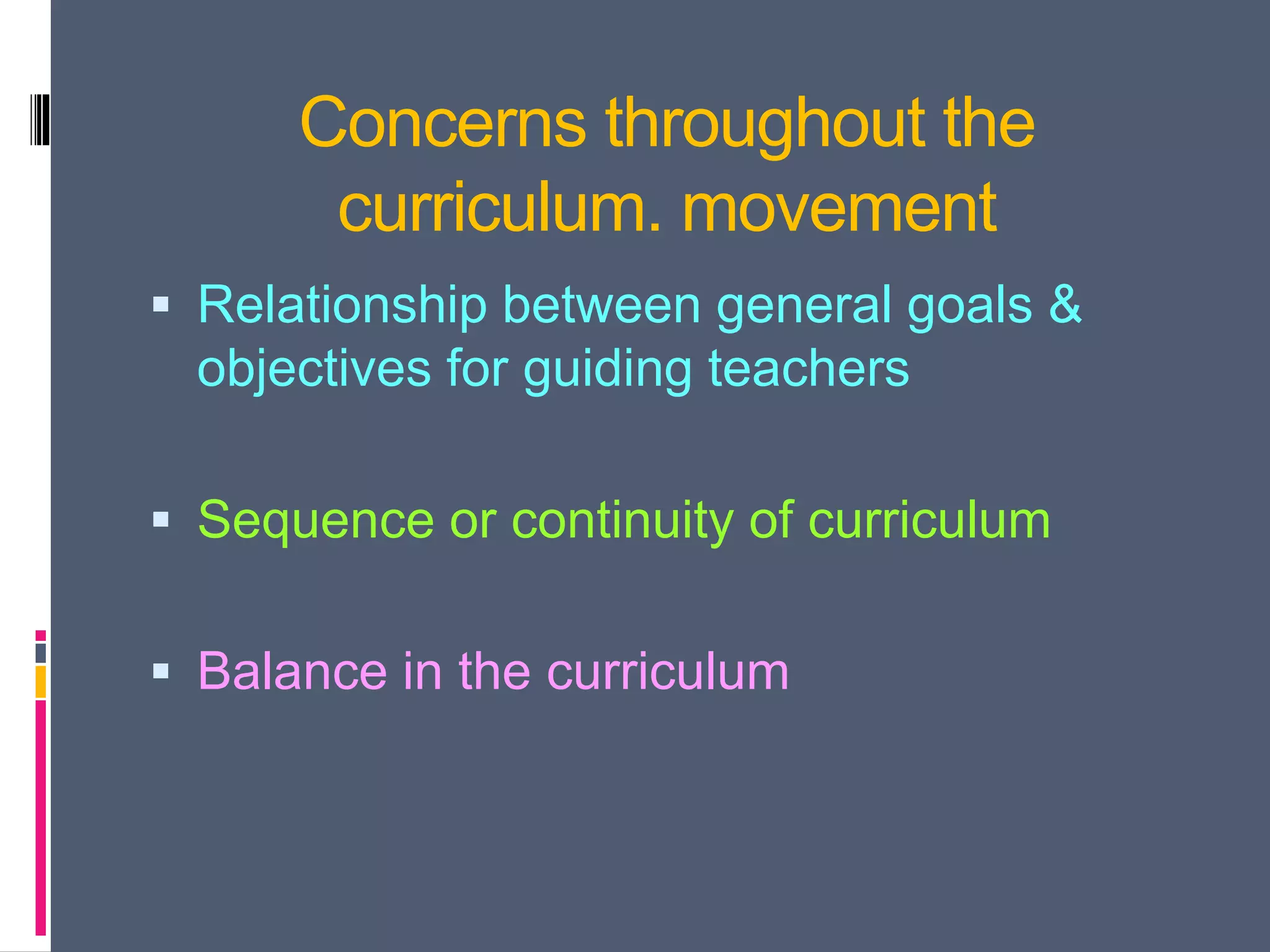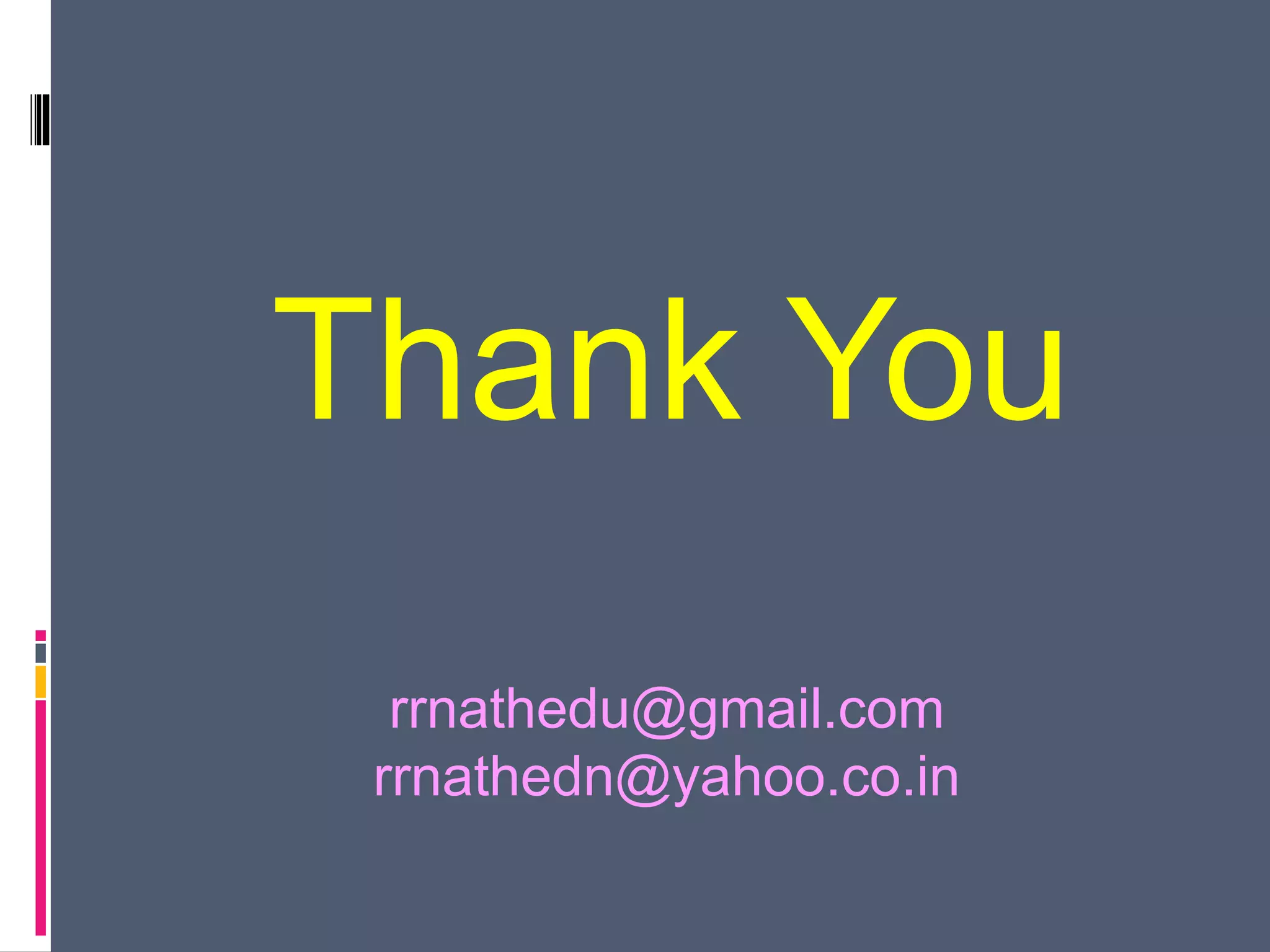The document discusses various concepts related to curriculum development. It defines curriculum as a plan for learners' education, a field of study, and a series of planned educational events. The origins and development of curriculum are traced from the 1890s with the Harvard report and Herbartian movement emphasizing subject selection and organization. Curriculum is described as a program of studies, content, planned experiences, and structured learning outcomes. Aspects include foundations, design, construction, development, implementation, engineering, and improvement. The document provides an overall picture of curriculum as well as terminology and processes related to curriculum concepts.
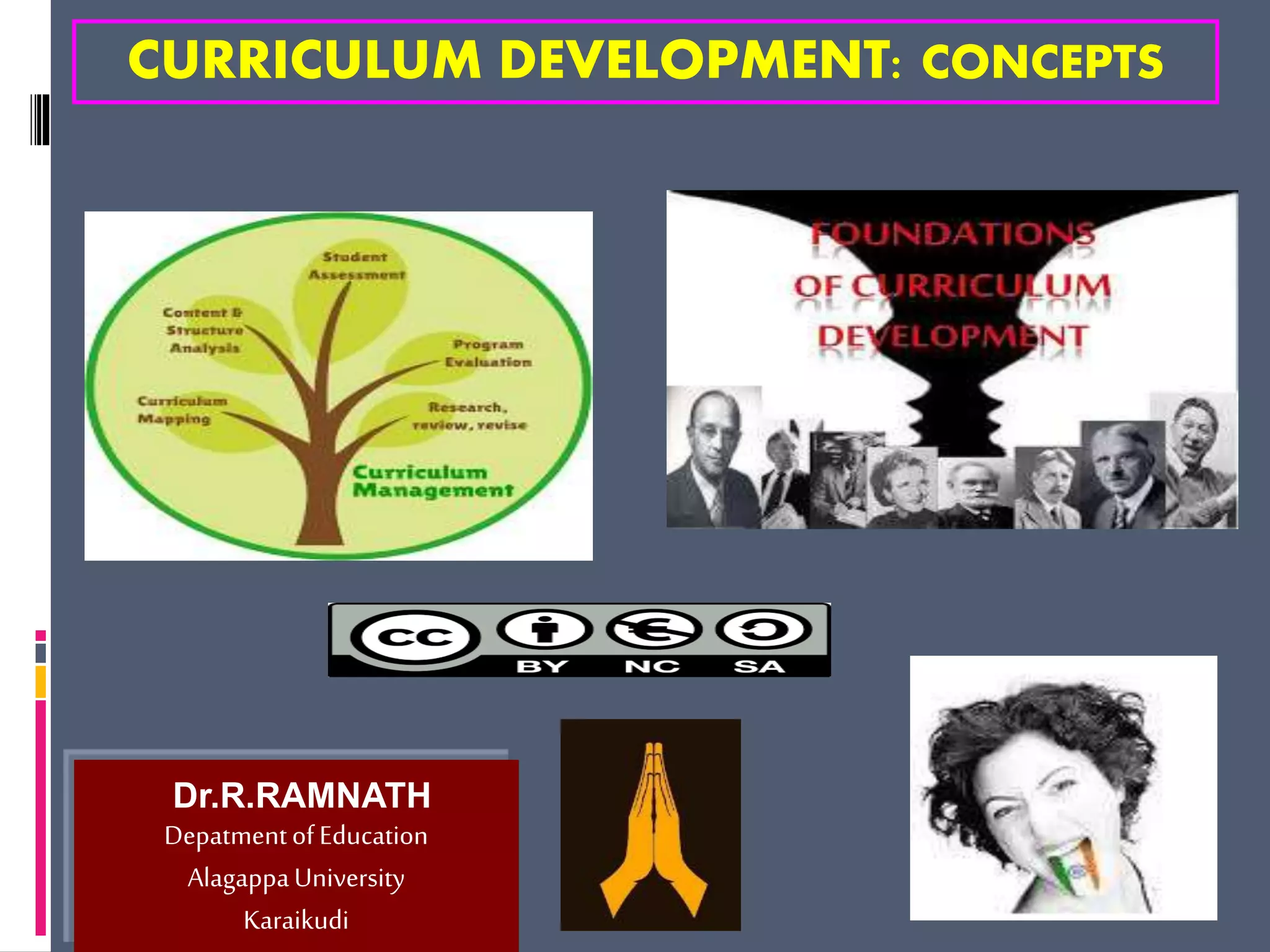

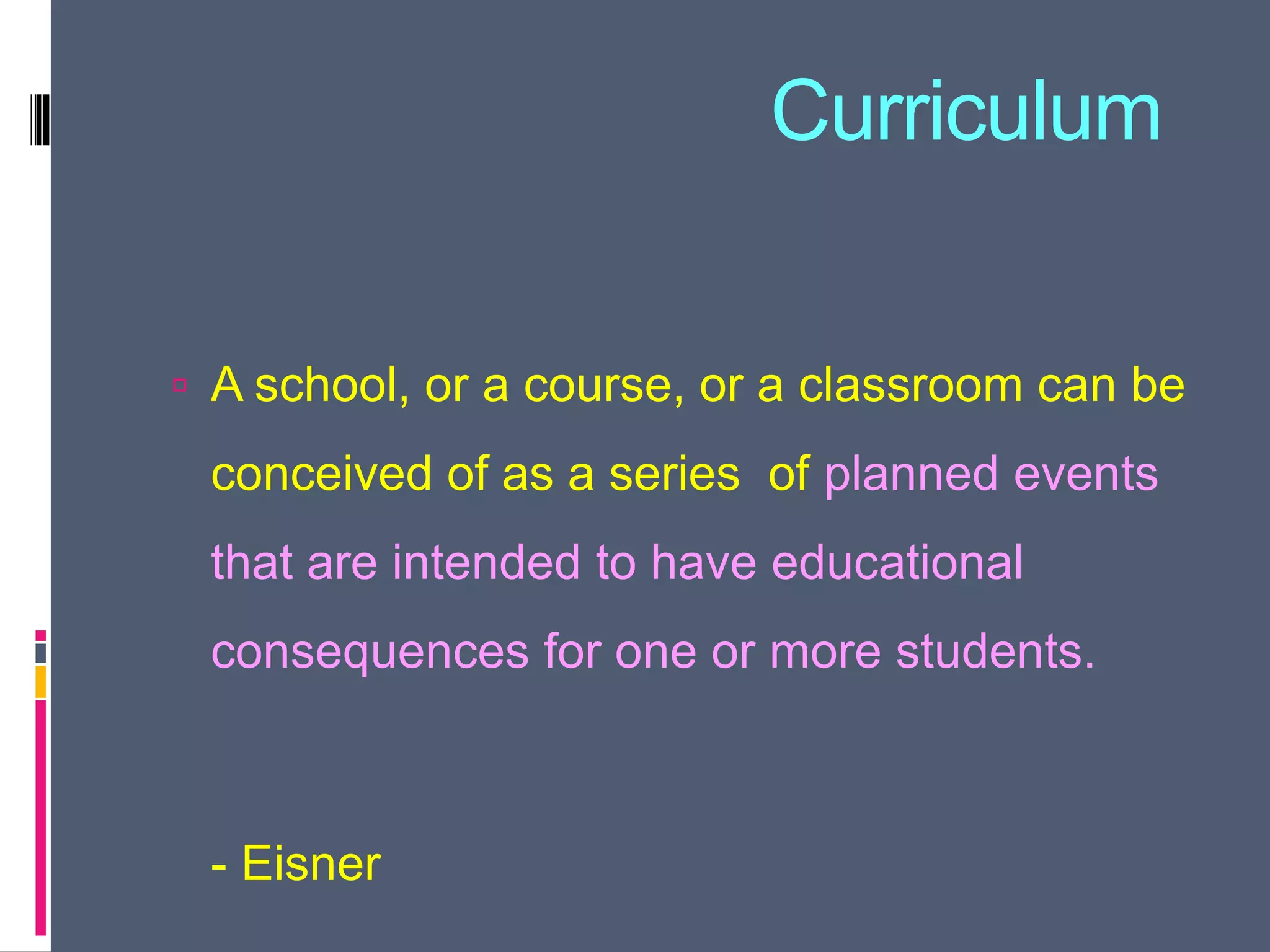
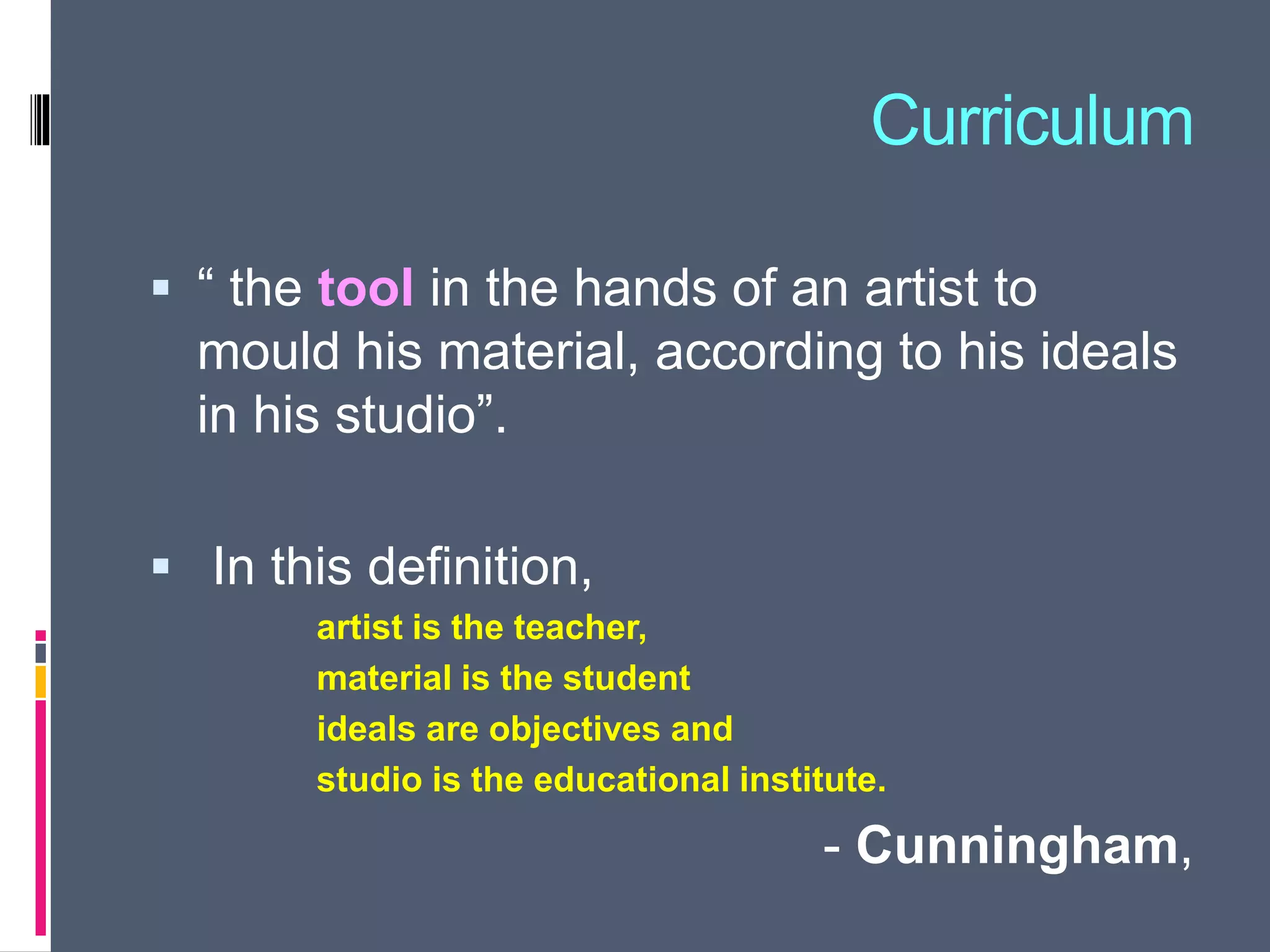
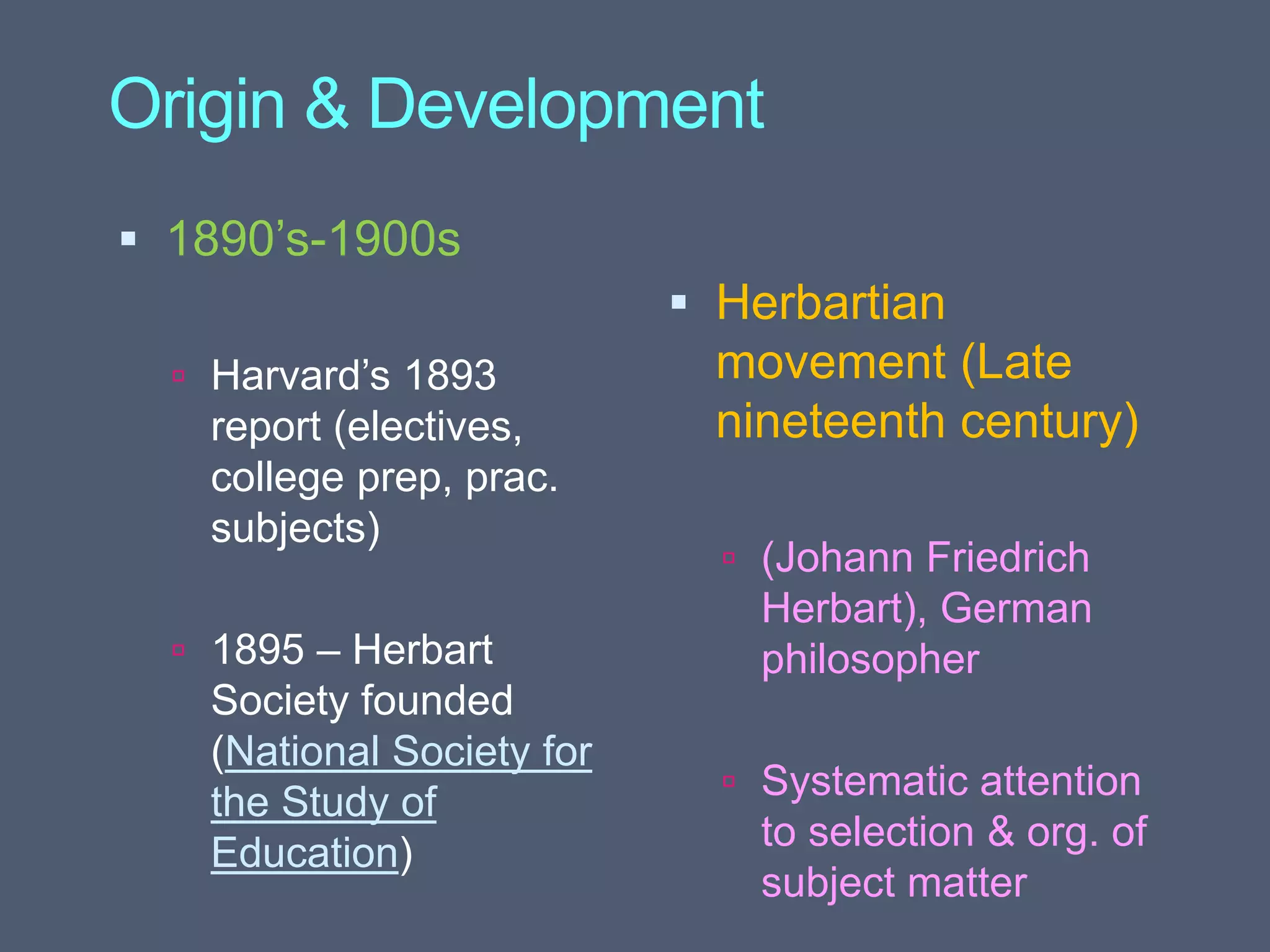


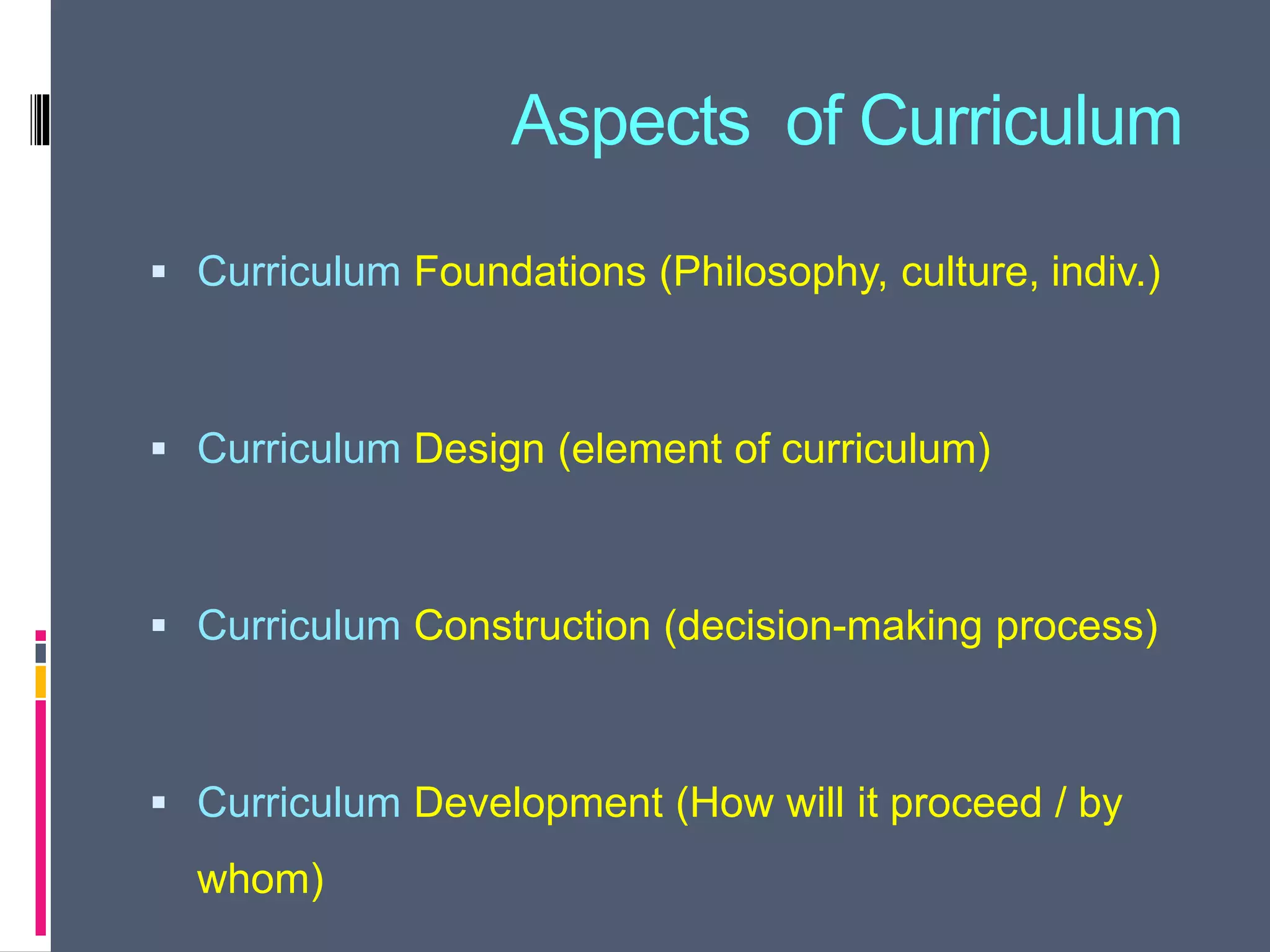
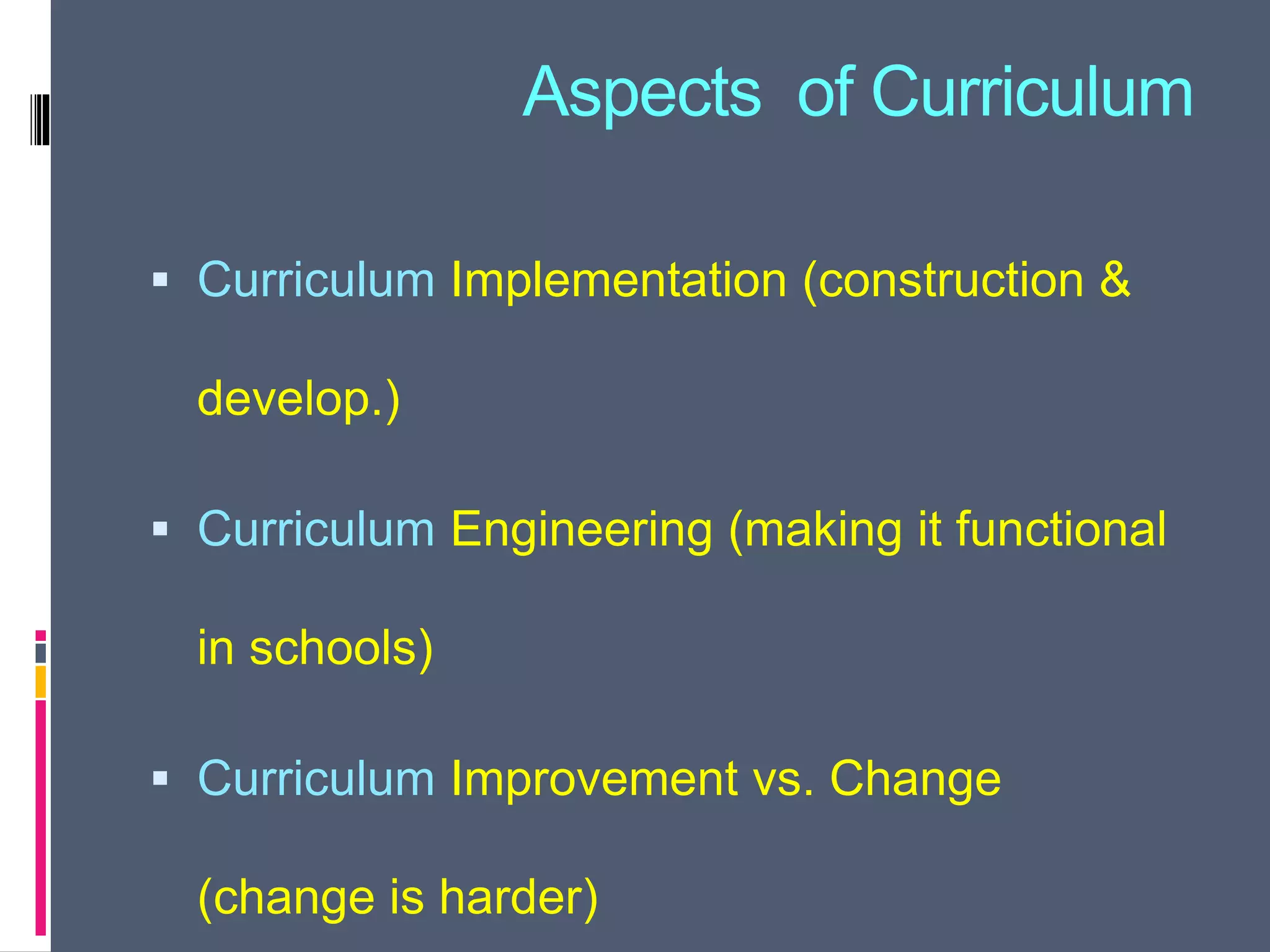
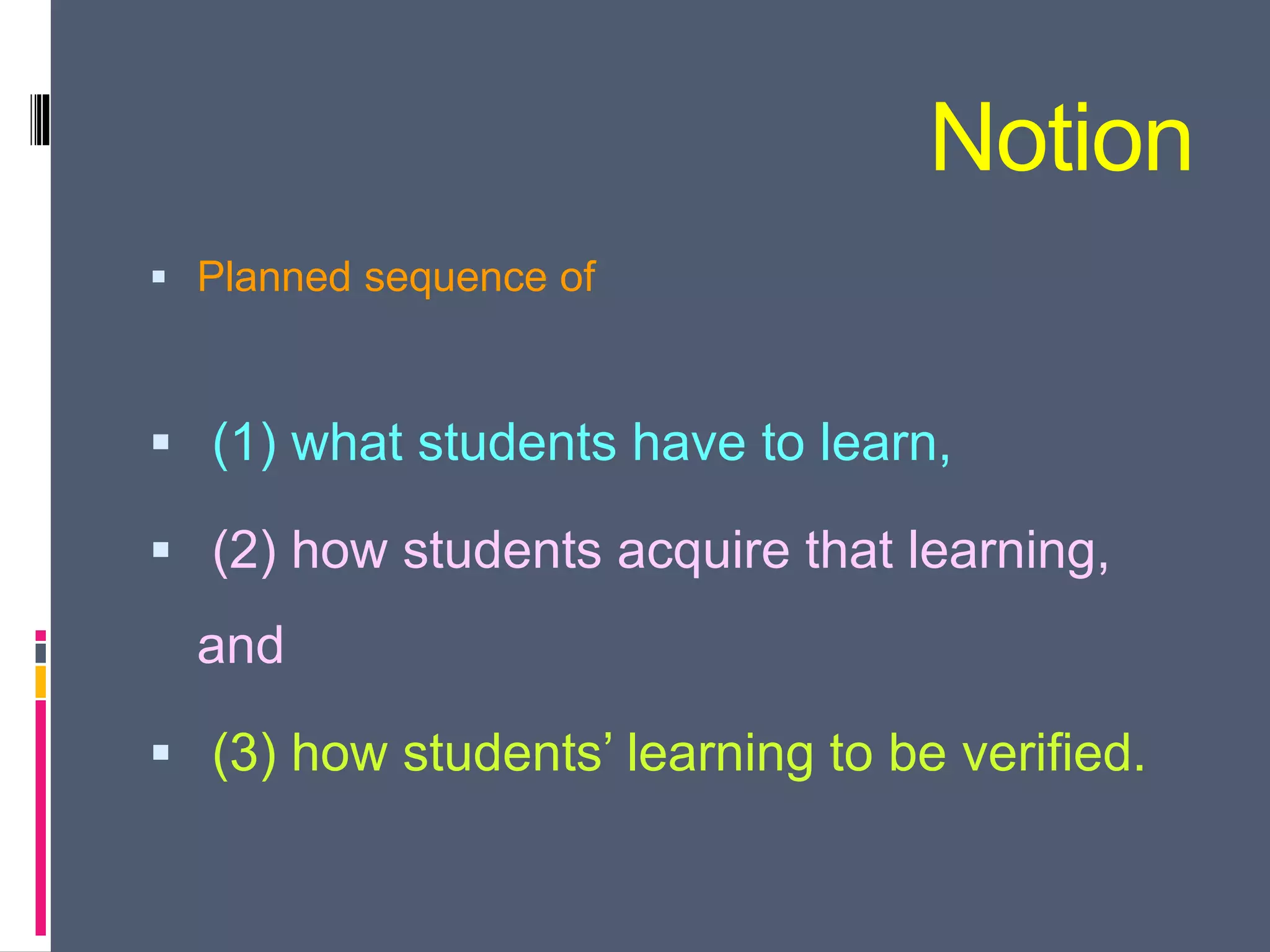
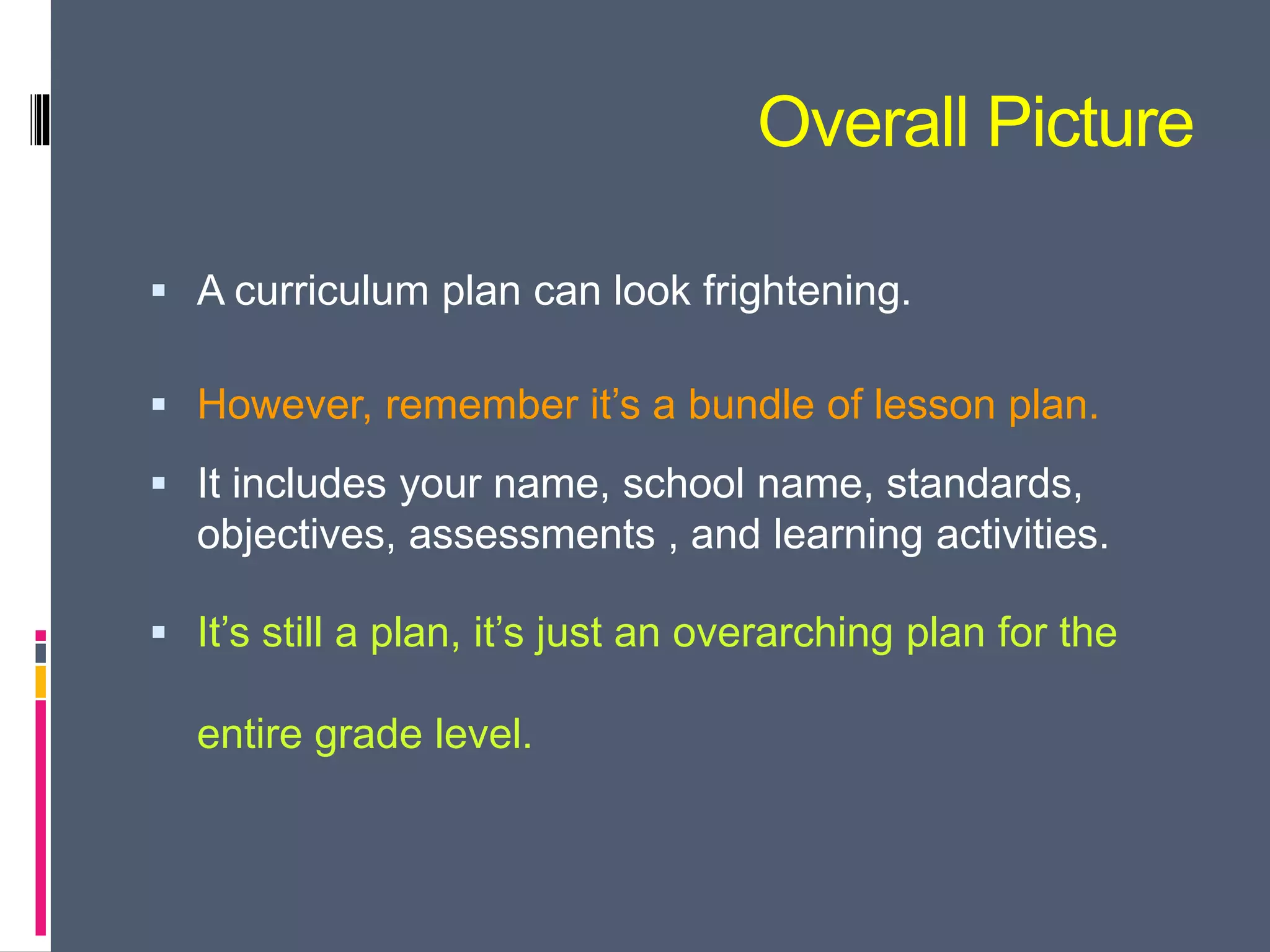
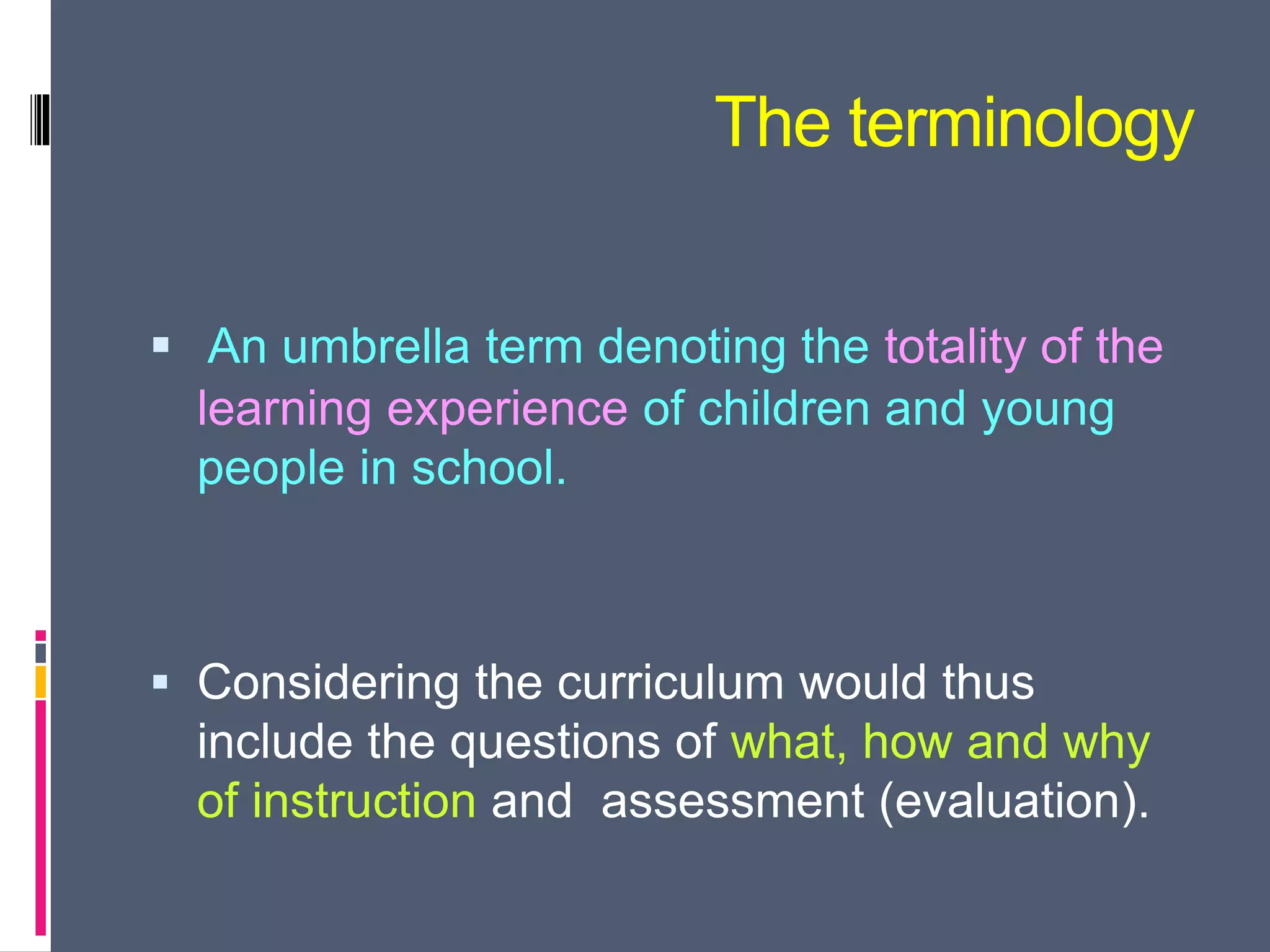
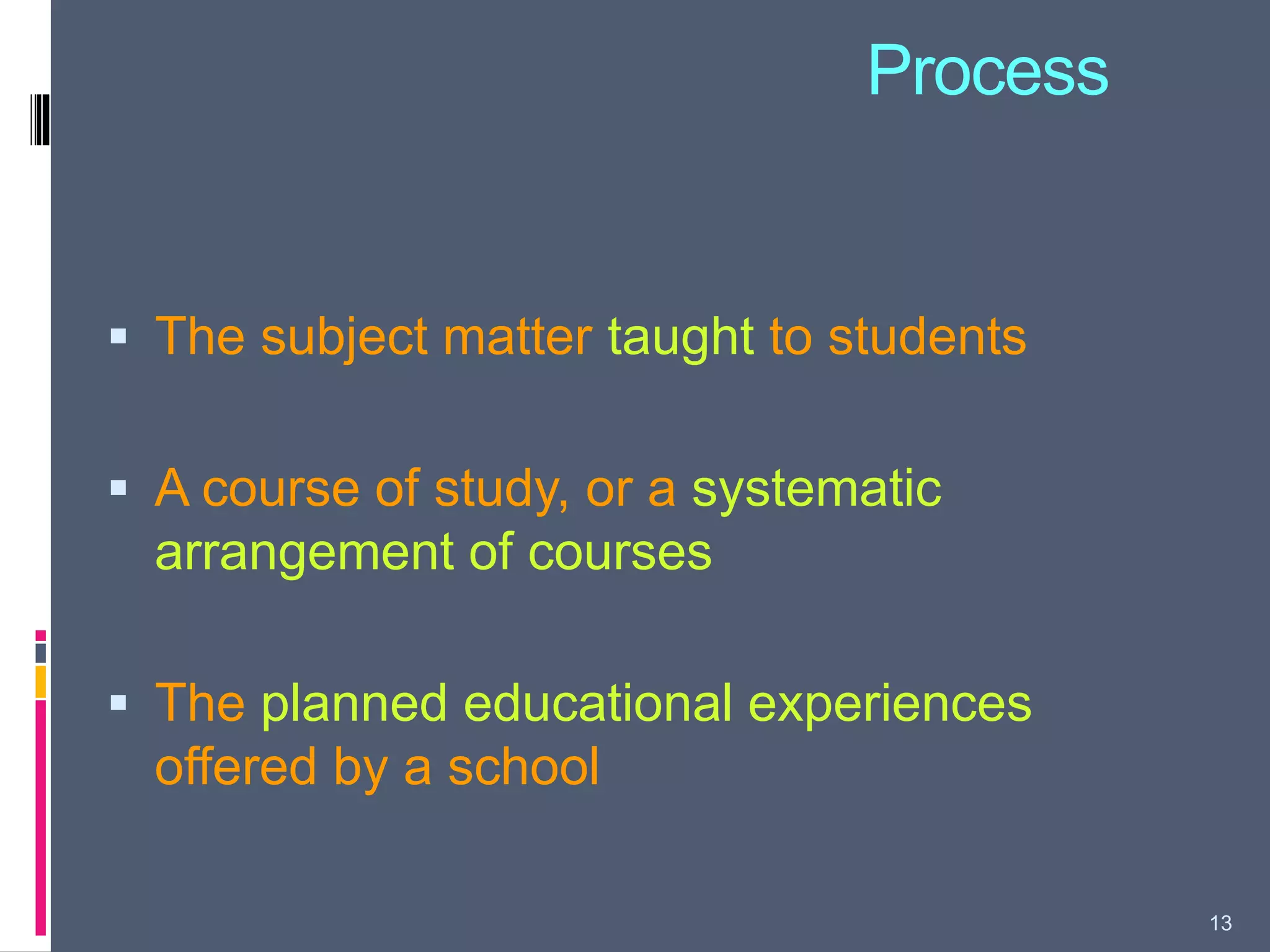
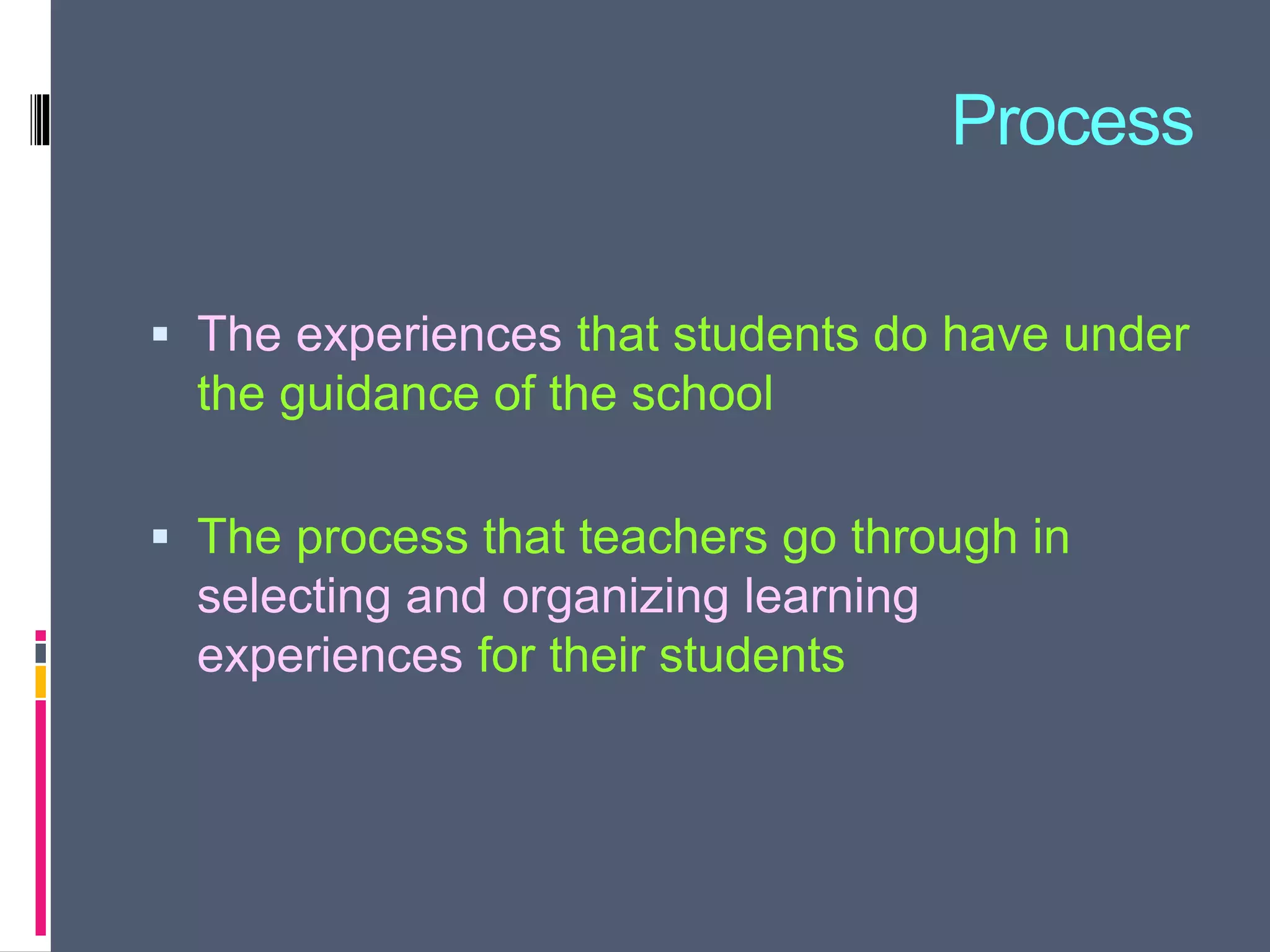
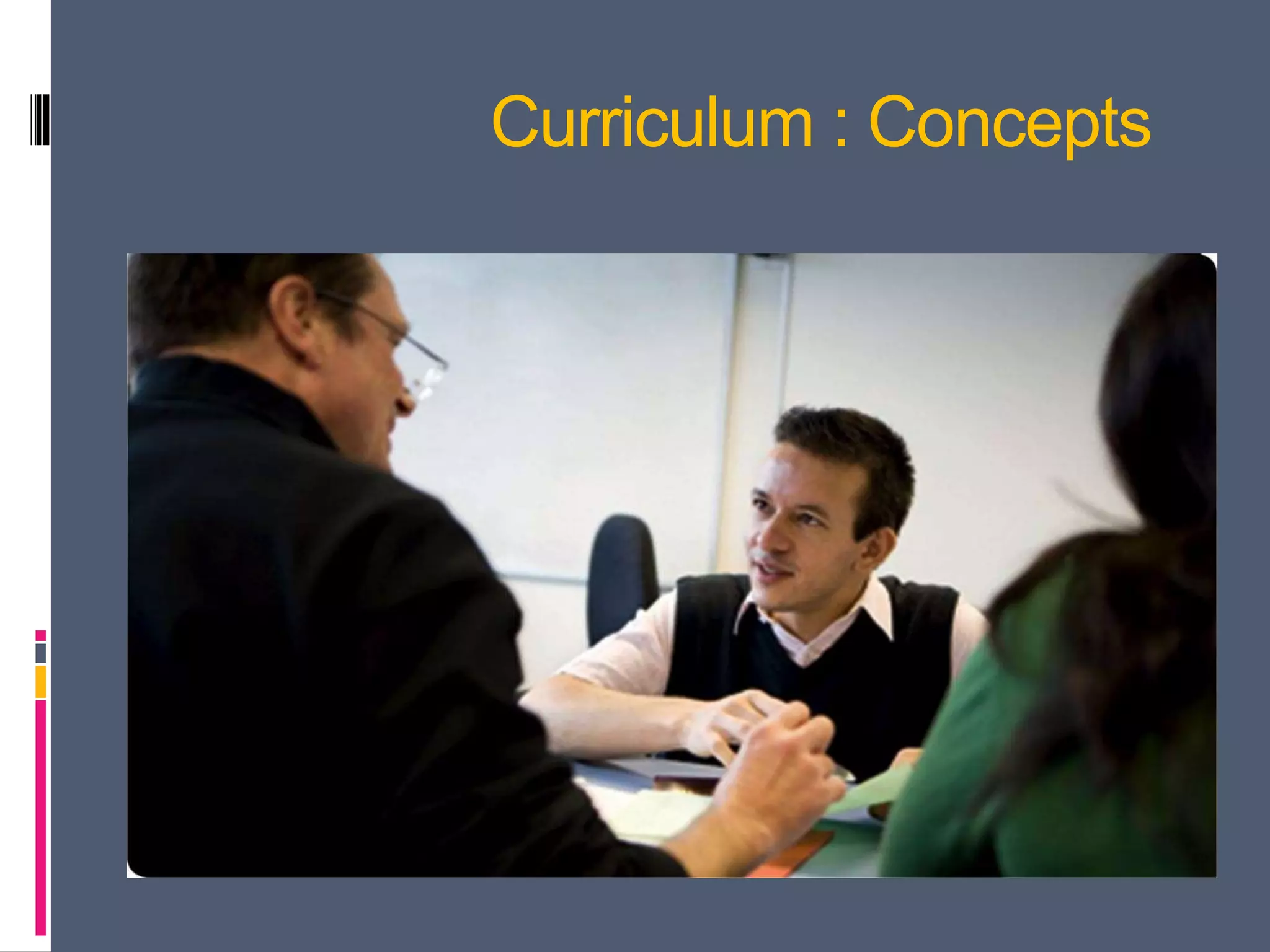
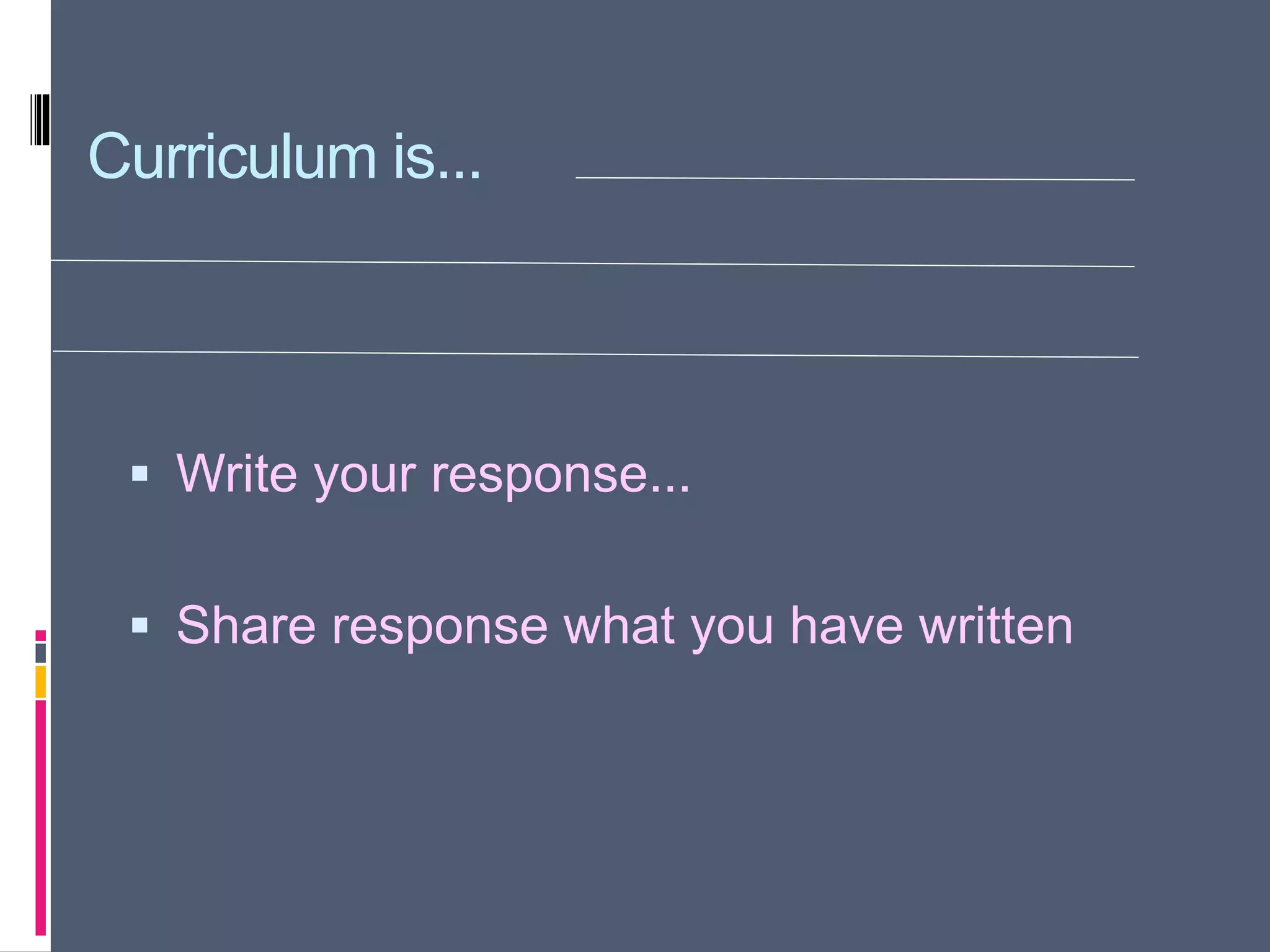
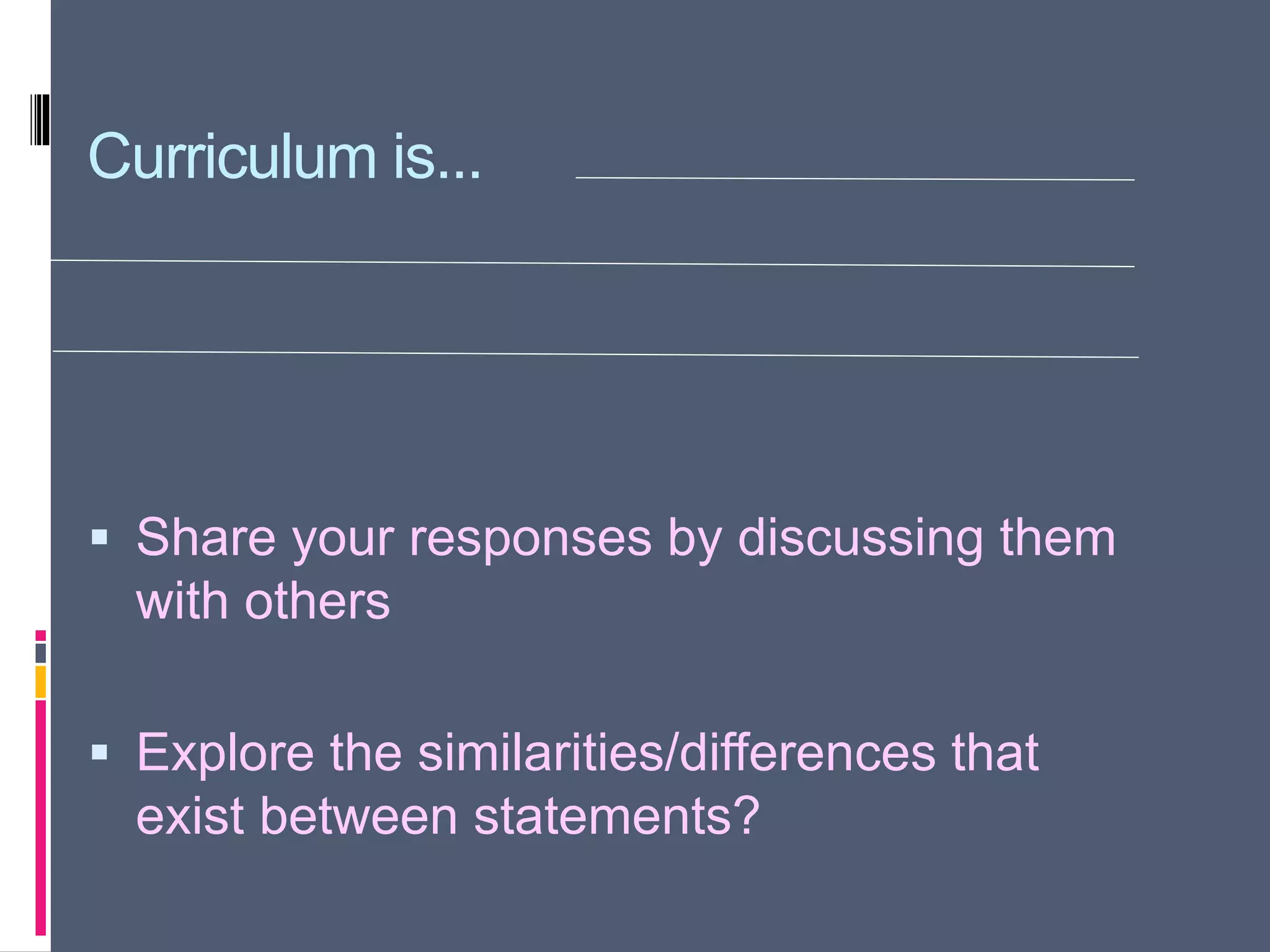
![:
Curriculum is [Oliva (2009)]
That which is taught in schools
A set of subjects
Content
A program of studies](https://image.slidesharecdn.com/bndqtlqxsime95hbrmng-signature-1dadeffc77c78b85cf6015e39f5879573c51c156b27266d8c8d9b0aaa1c65142-poli-201211113347/75/Cuiculum-development-concept-18-2048.jpg)
![Curriculum is [Oliva (2009)]
A set of materials
A sequence of courses
A set of performance objectives
A course of study](https://image.slidesharecdn.com/bndqtlqxsime95hbrmng-signature-1dadeffc77c78b85cf6015e39f5879573c51c156b27266d8c8d9b0aaa1c65142-poli-201211113347/75/Cuiculum-development-concept-19-2048.jpg)
![Curriculum is [Oliva (2009)]
Everything that goes on in the school, including
extra-class activities, guidance and interpersonal
relations
That which is taught both inside and outside of
school directed by the school
Everything that is planned by school personnel
A series of experiences undergone by learners in
school
That which an individual learner experiences as a](https://image.slidesharecdn.com/bndqtlqxsime95hbrmng-signature-1dadeffc77c78b85cf6015e39f5879573c51c156b27266d8c8d9b0aaa1c65142-poli-201211113347/75/Cuiculum-development-concept-20-2048.jpg)
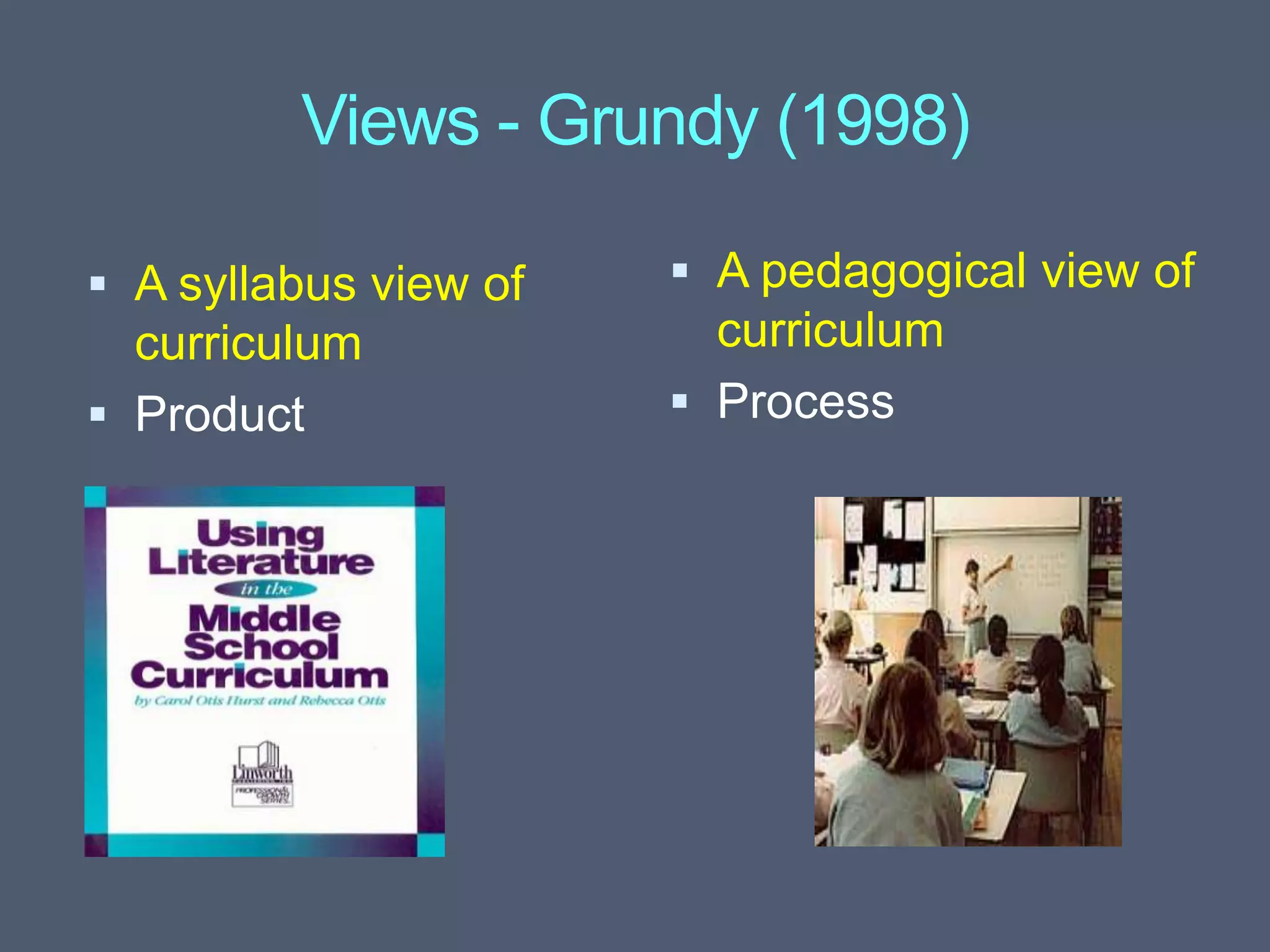

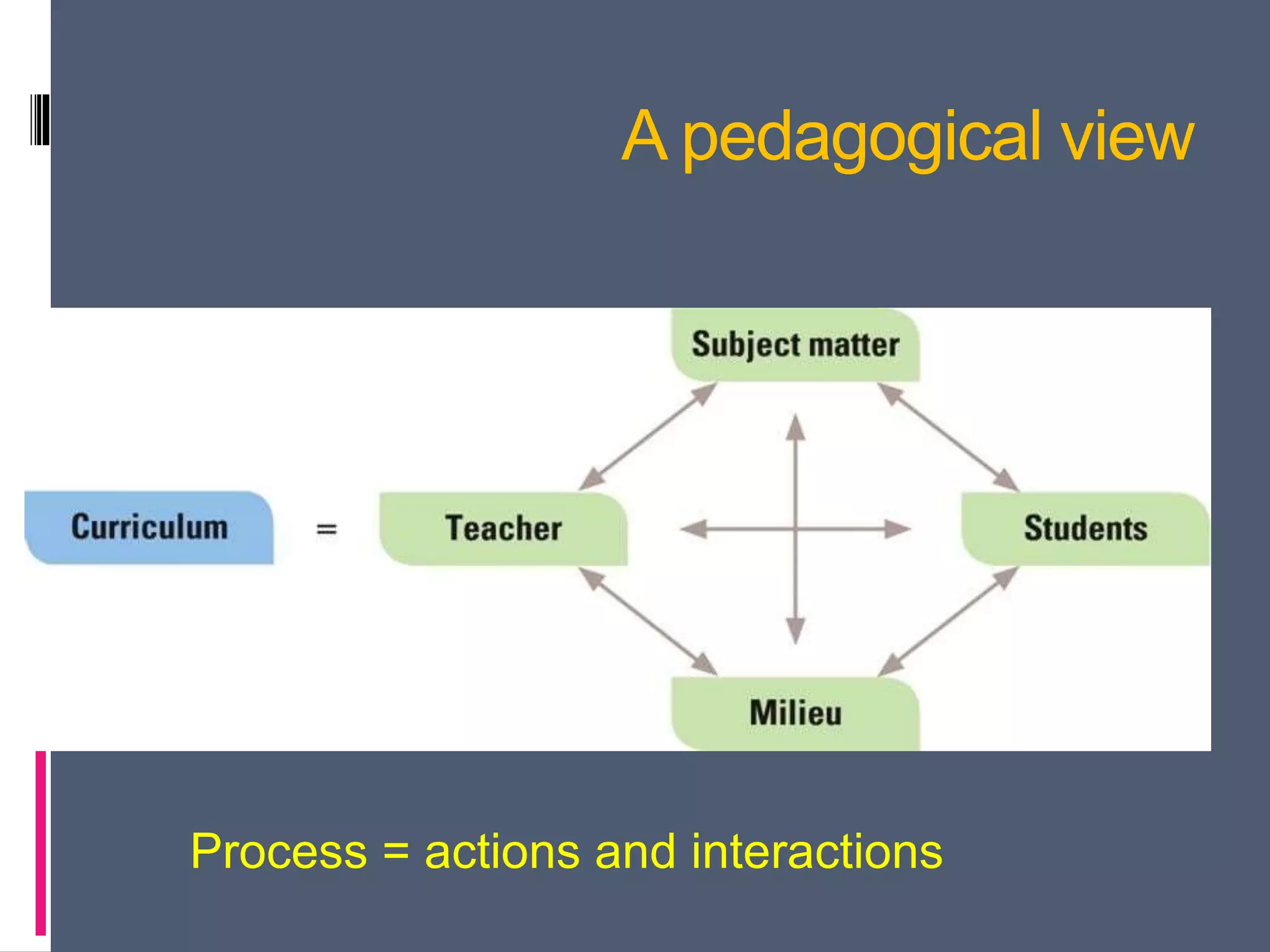
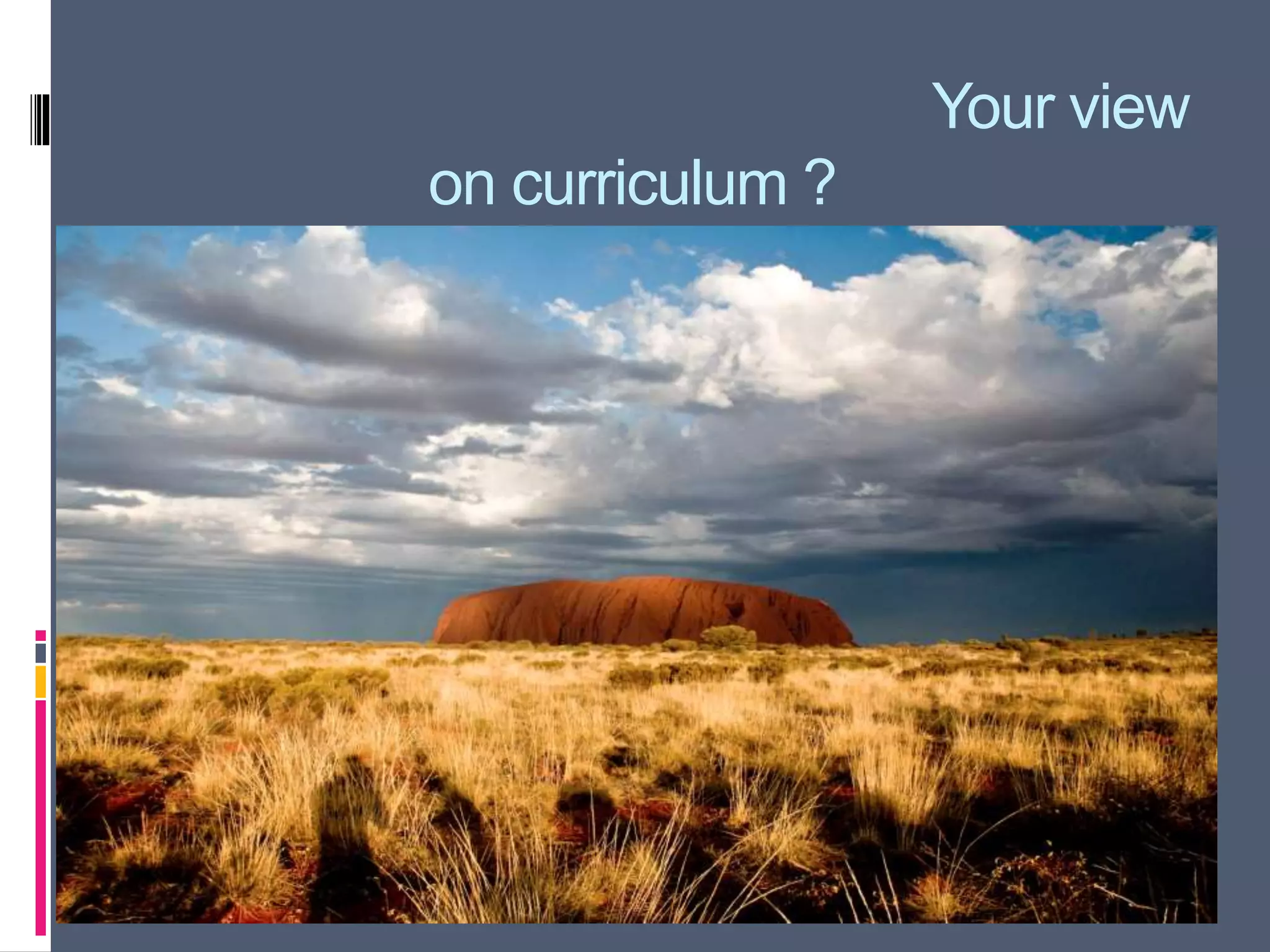
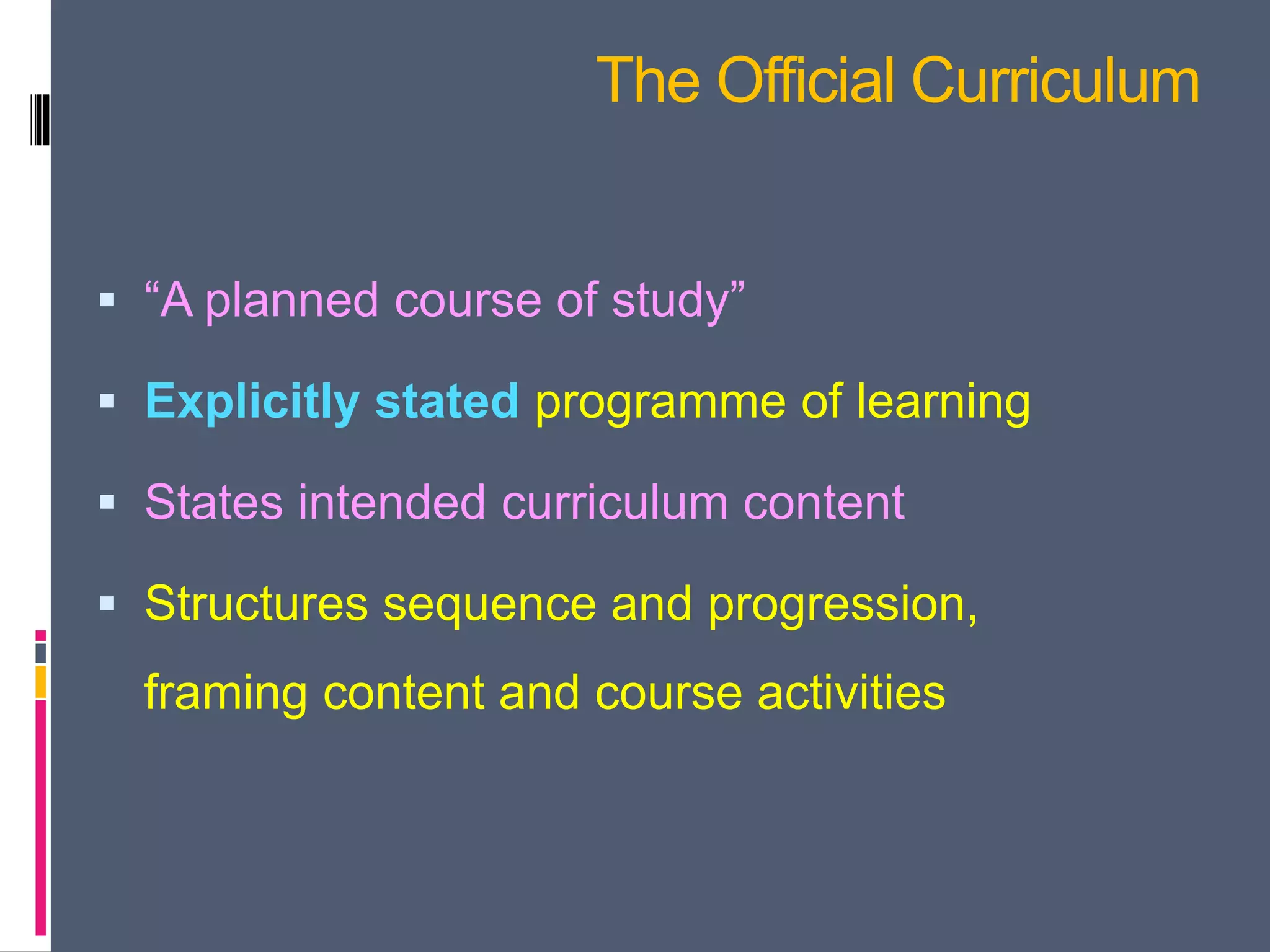
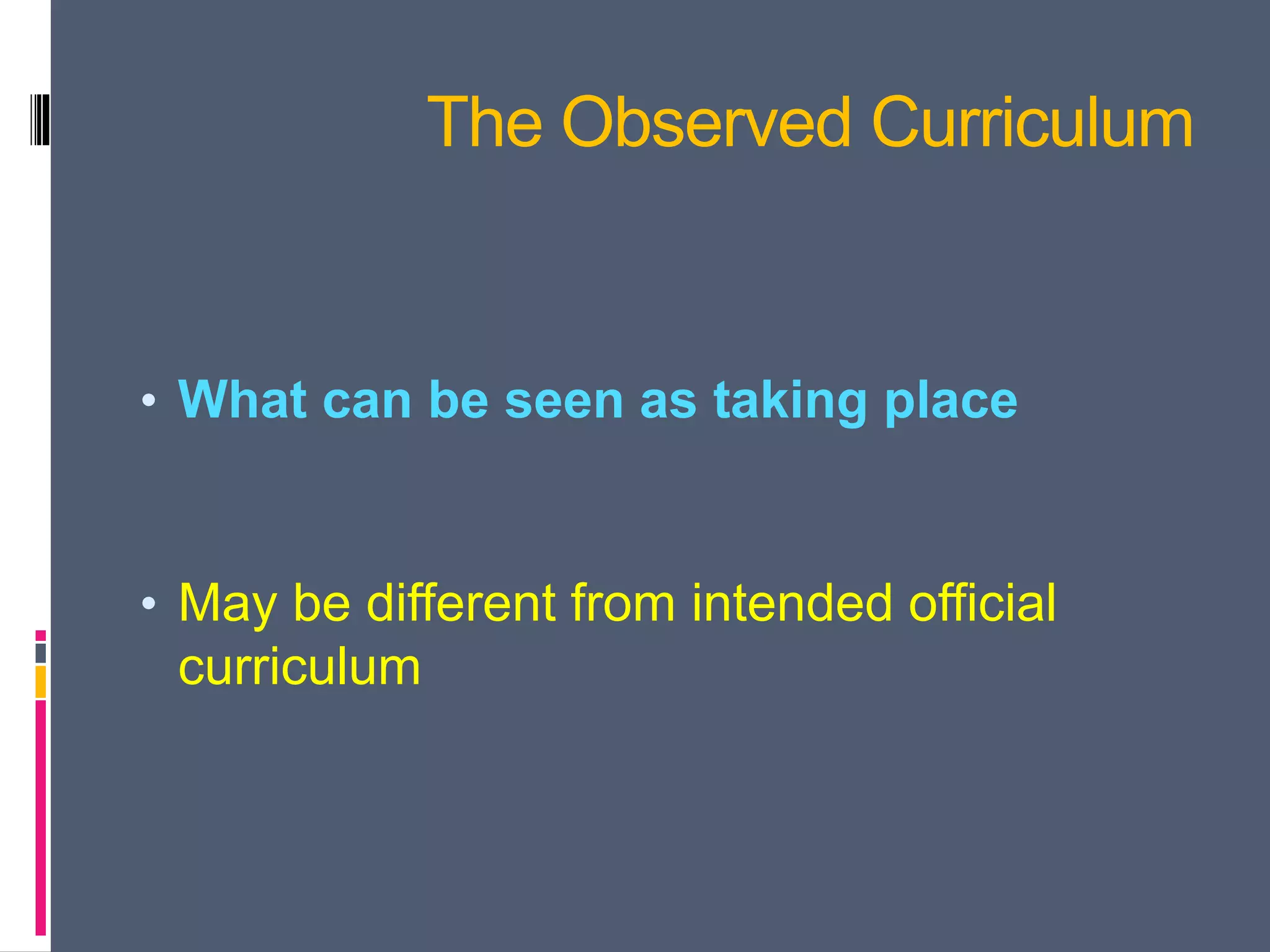
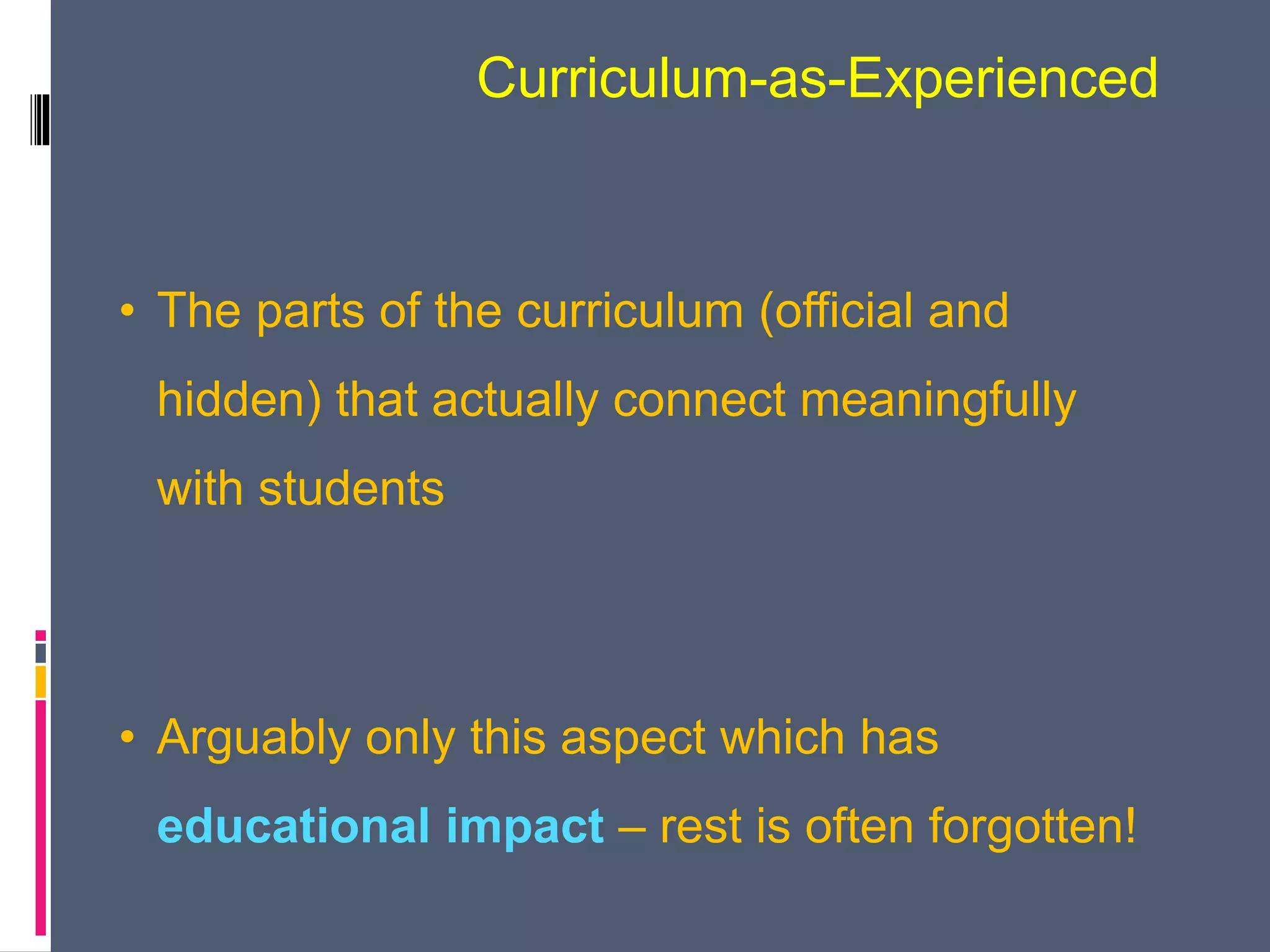
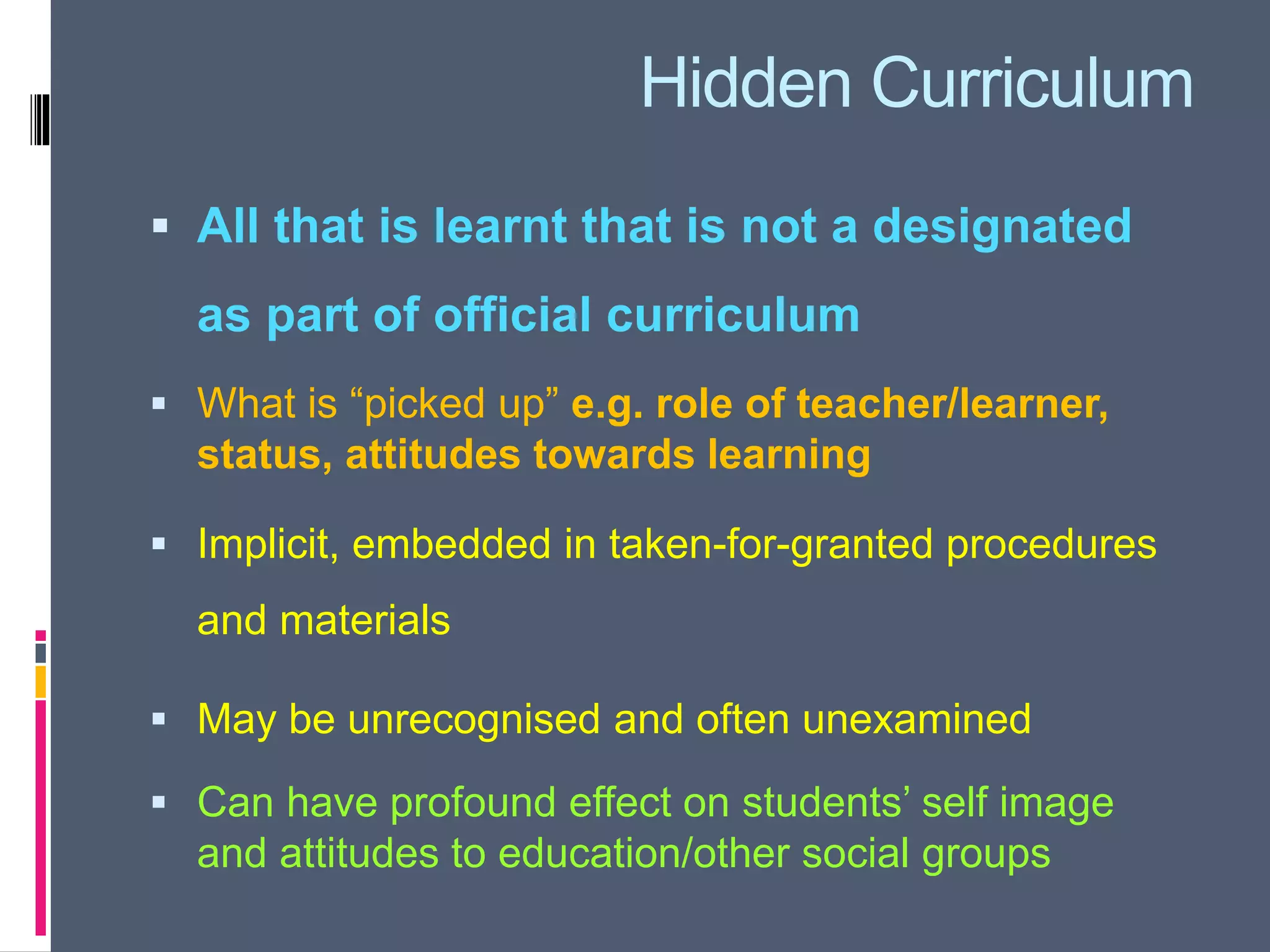
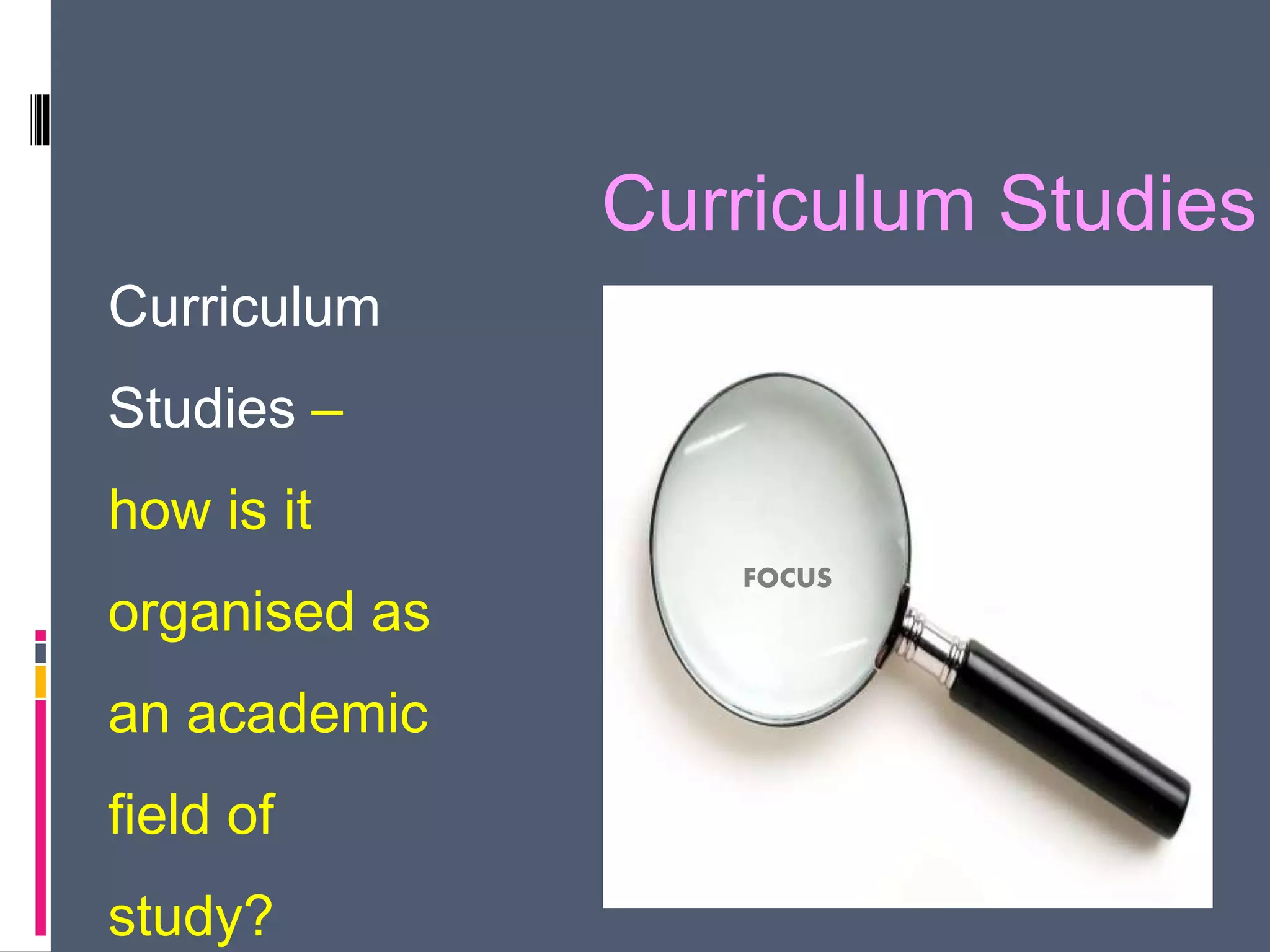
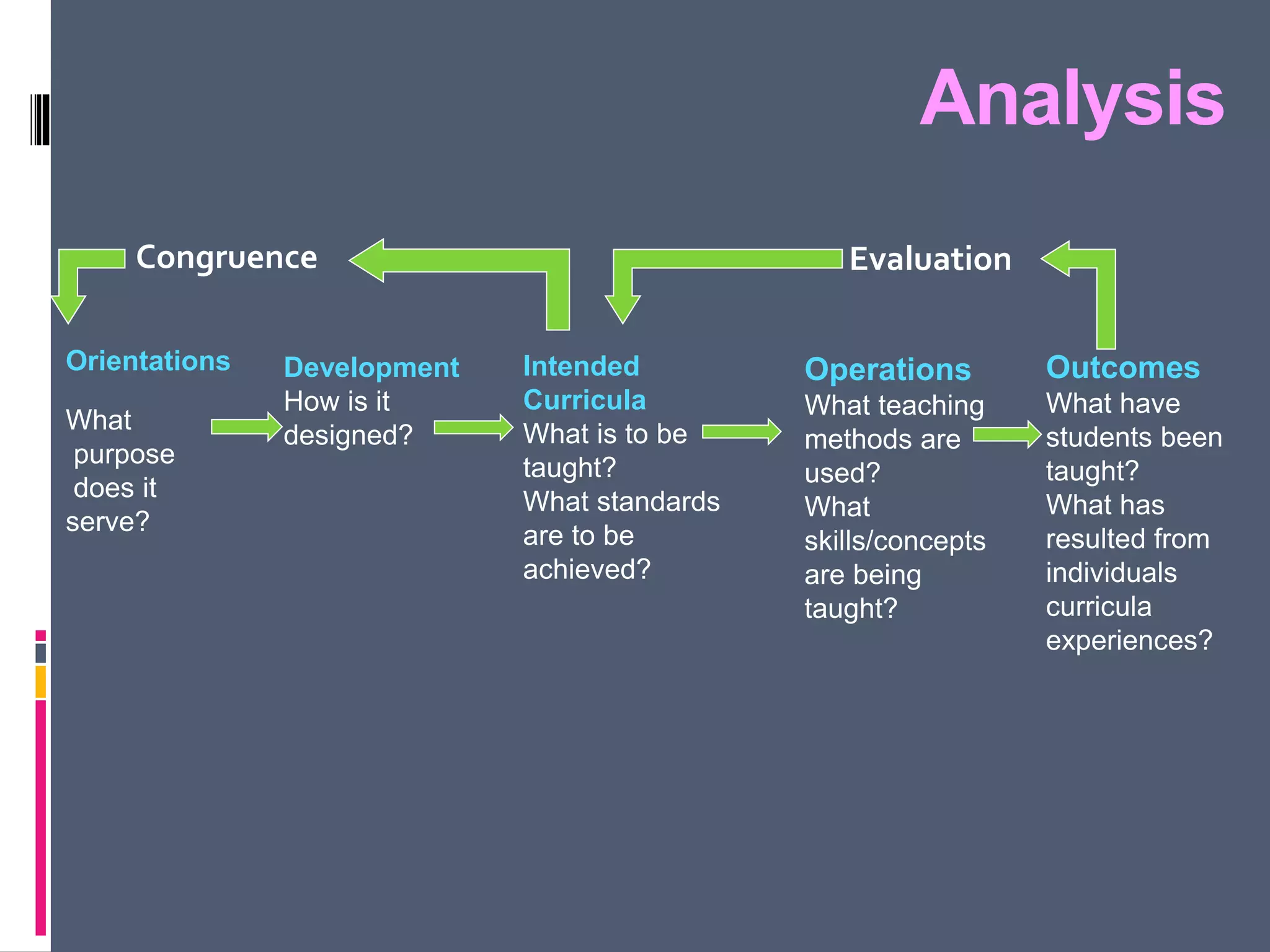
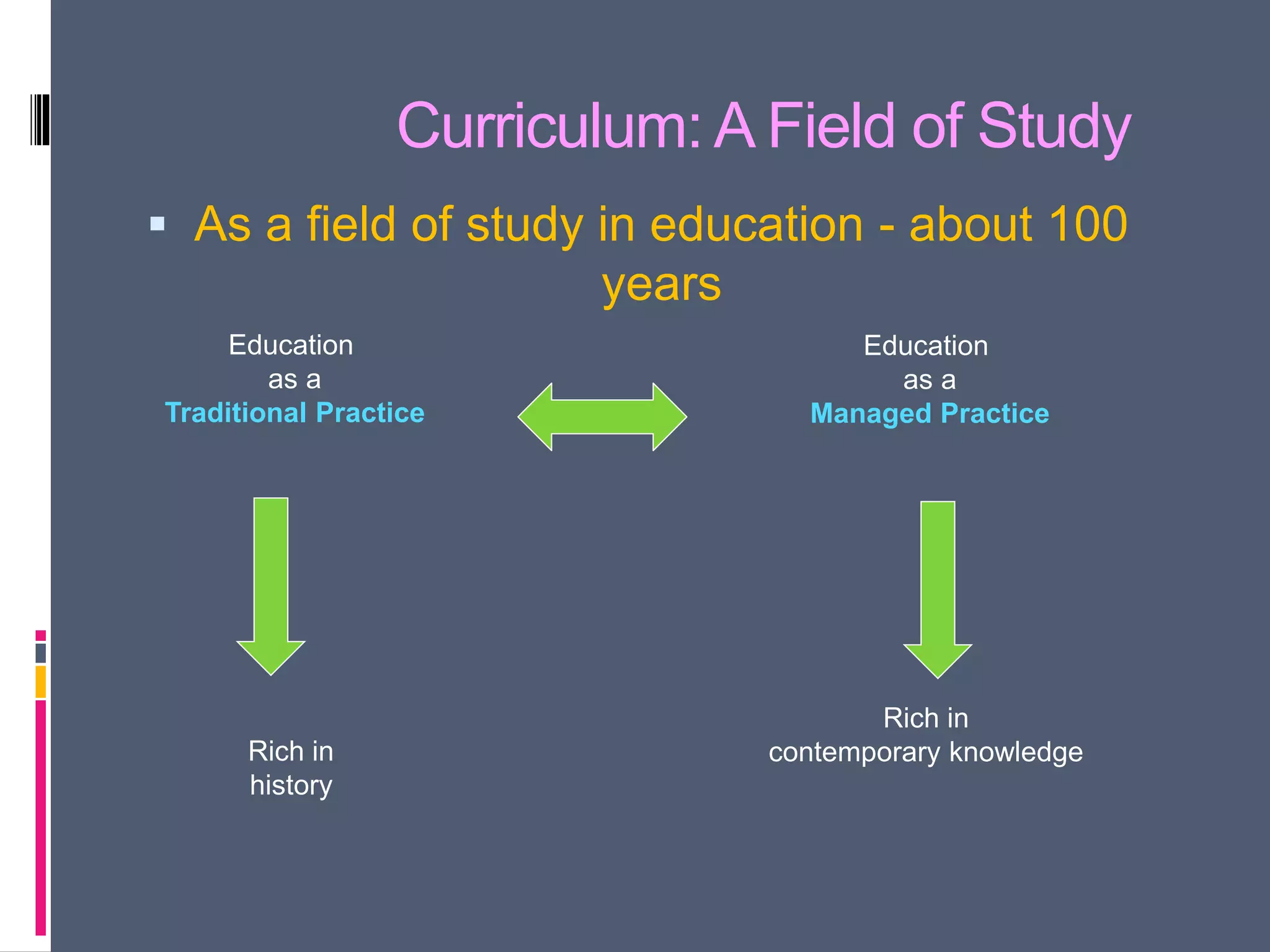

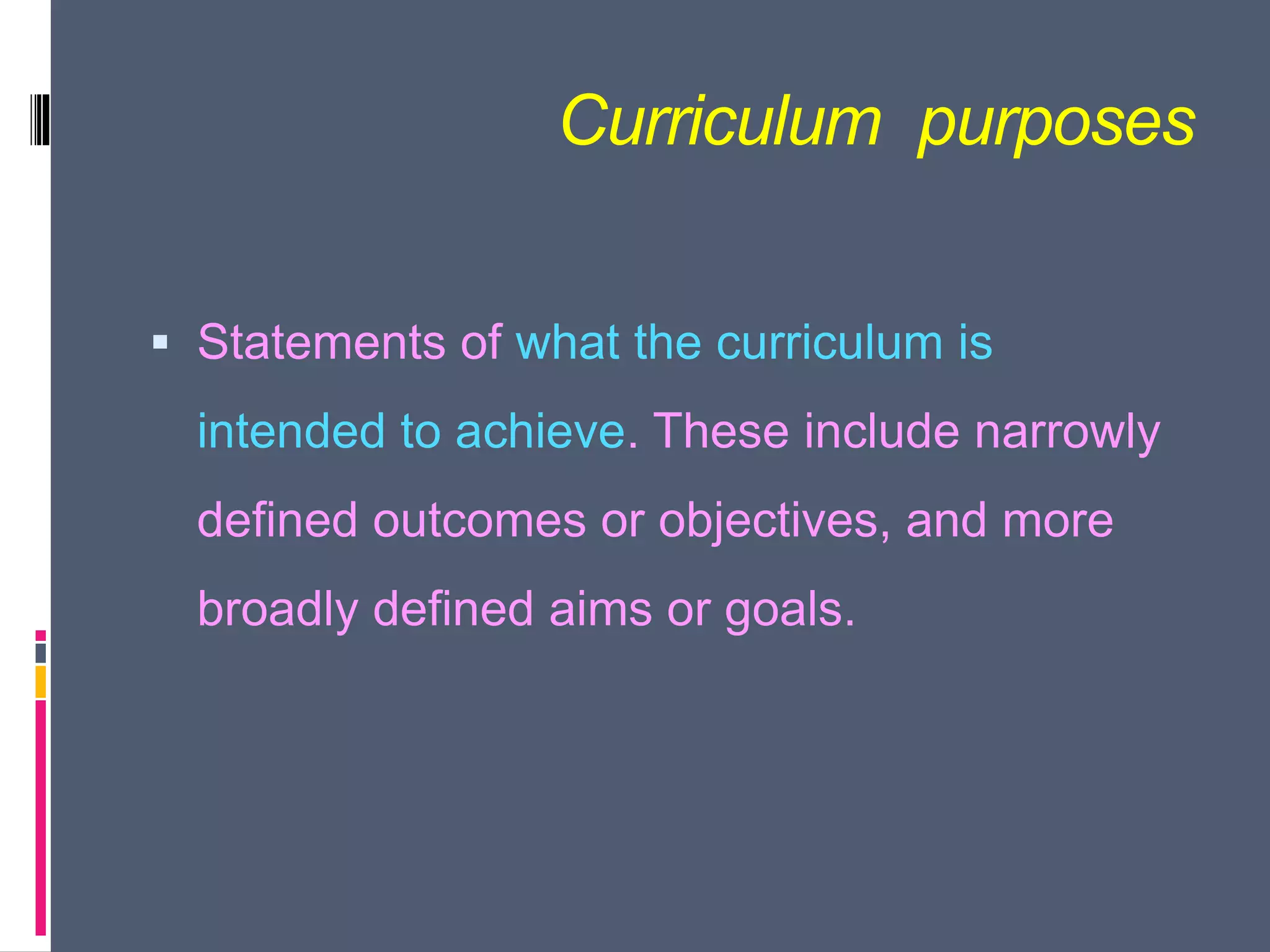
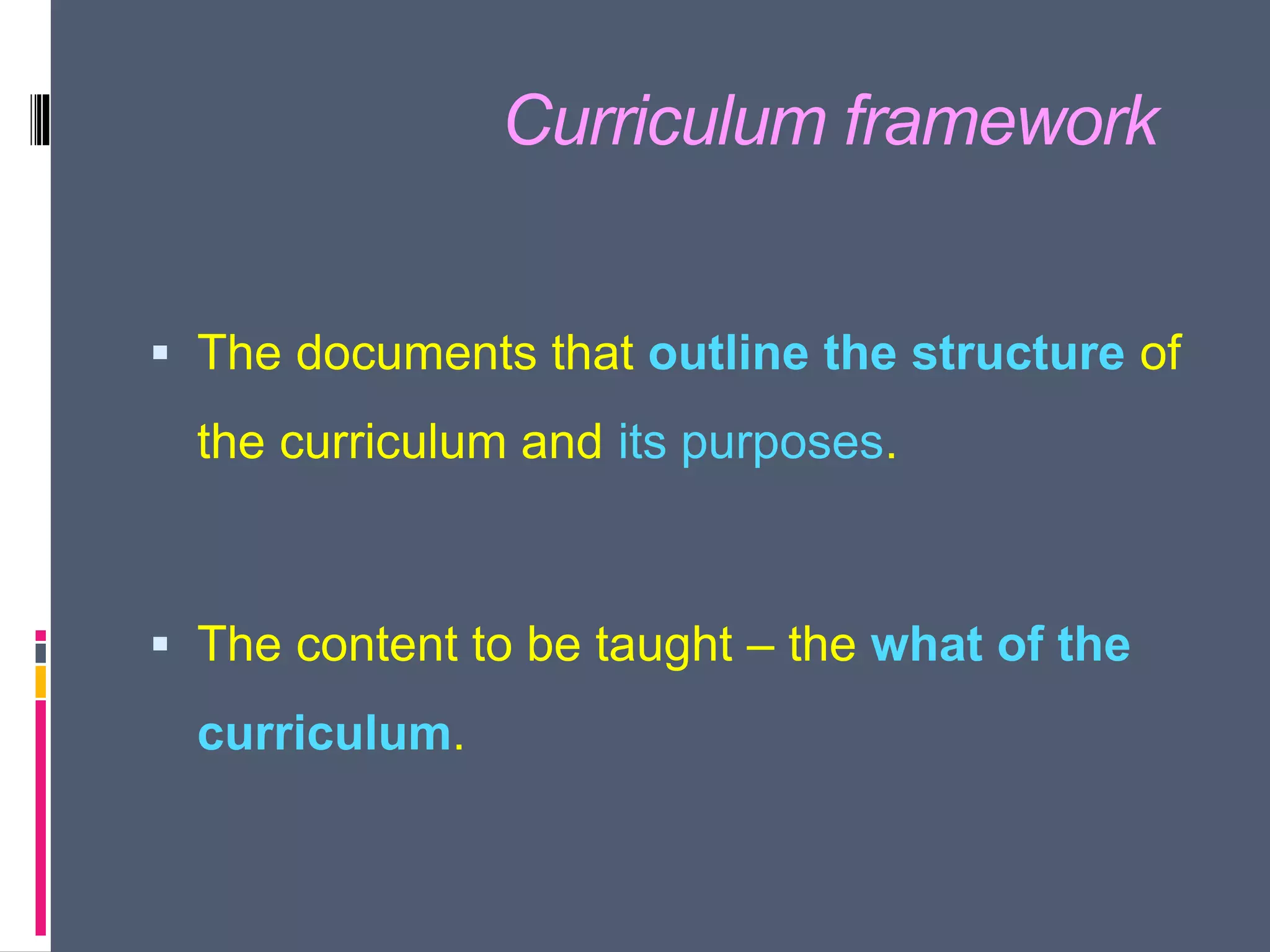
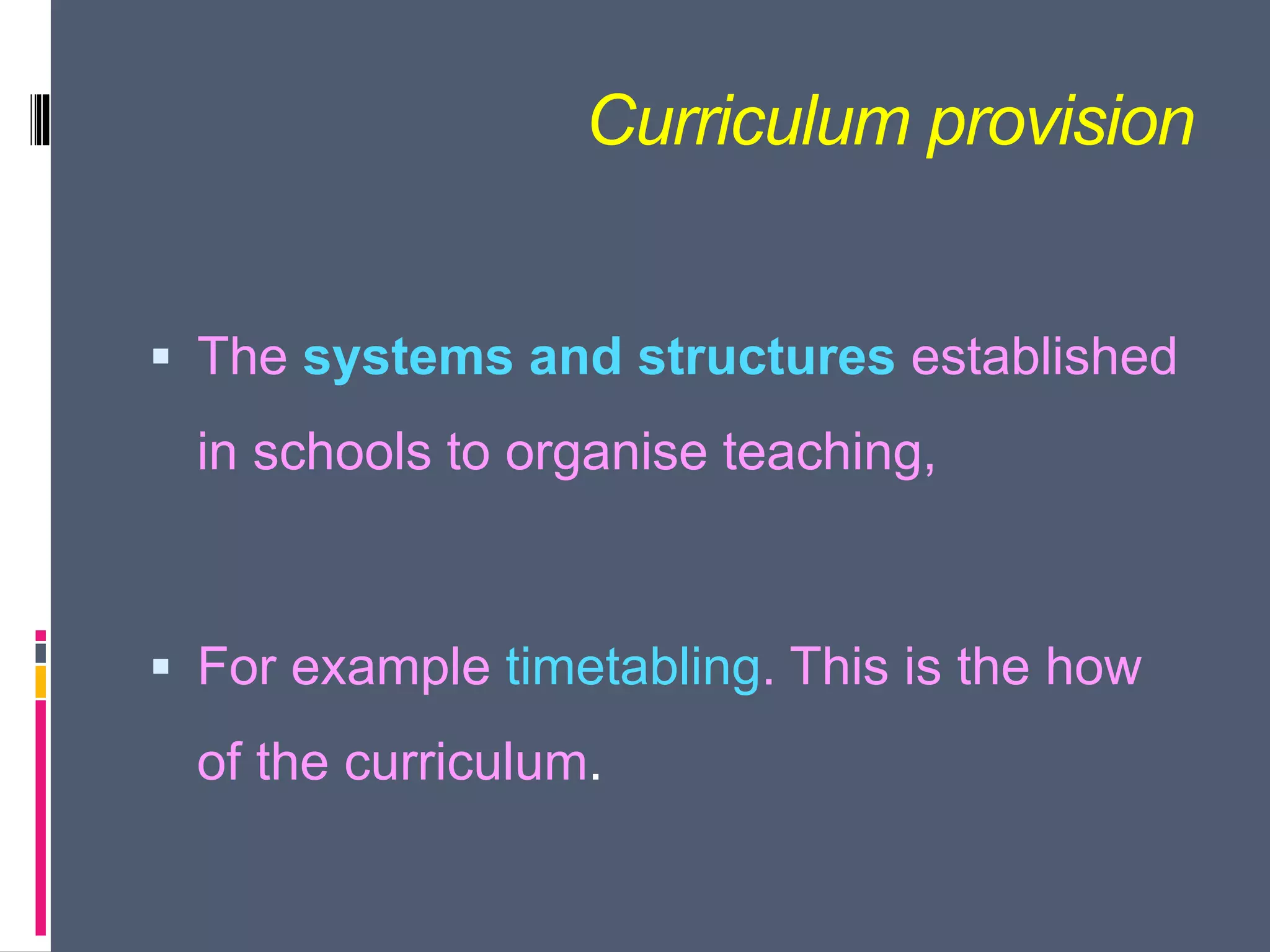
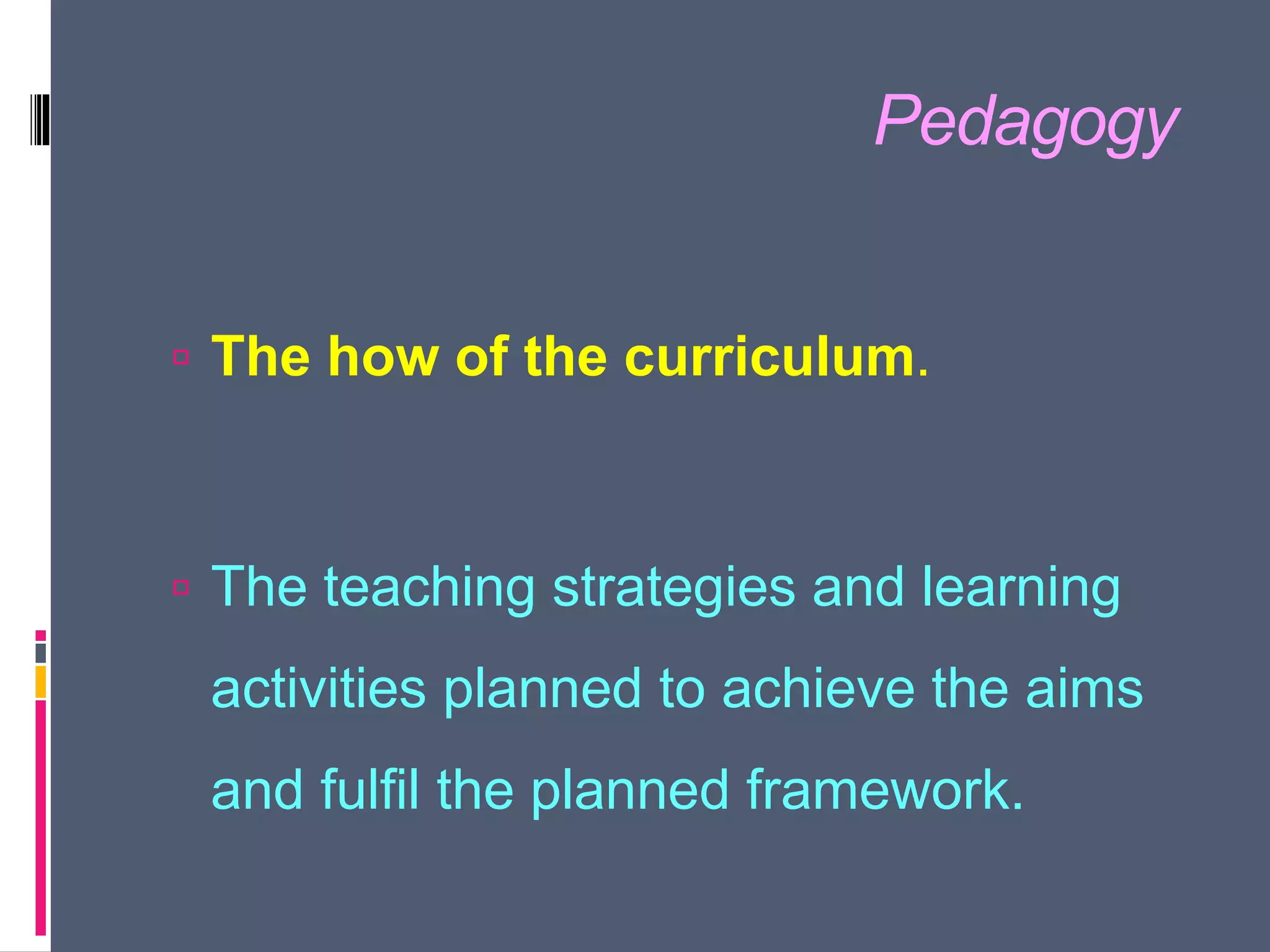
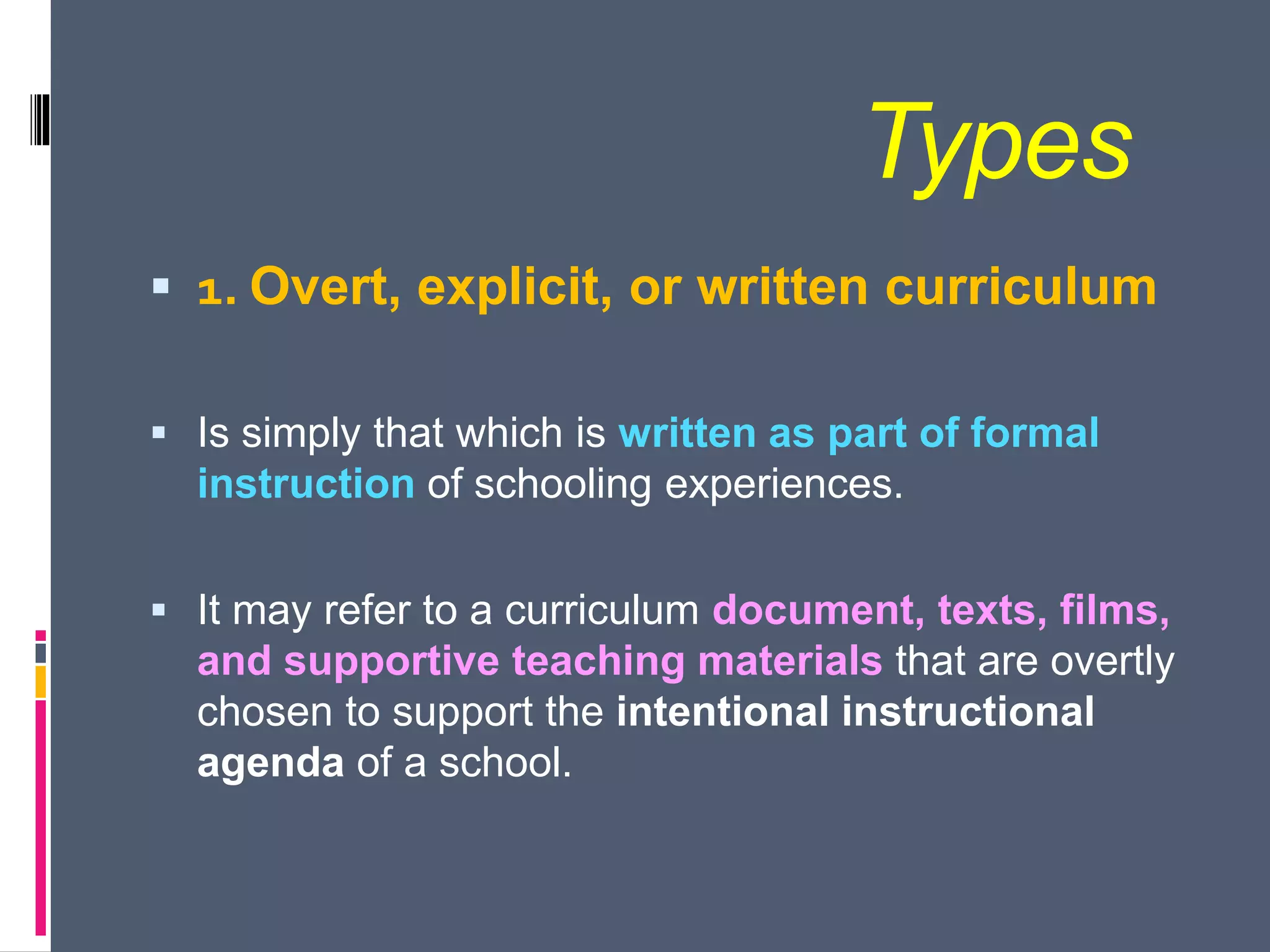
![2. Societal curriculum (or social curricula)
Cortes (1981), defines this curriculum as:…[the]
massive, ongoing, informal curriculum of family,
peer groups, neighborhoods, churches,
organizations, occupations, mass media, and
other socializing forces that “educate” all of us
throughout our lives.
This type of curricula can now be expanded to
include the powerful effects of social media
(YouTube; Facebook; Twitter; Pinterest, etc) and how
it actively helps create new perspectives, and can
help shape both individual and public opinion.](https://image.slidesharecdn.com/bndqtlqxsime95hbrmng-signature-1dadeffc77c78b85cf6015e39f5879573c51c156b27266d8c8d9b0aaa1c65142-poli-201211113347/75/Cuiculum-development-concept-38-2048.jpg)
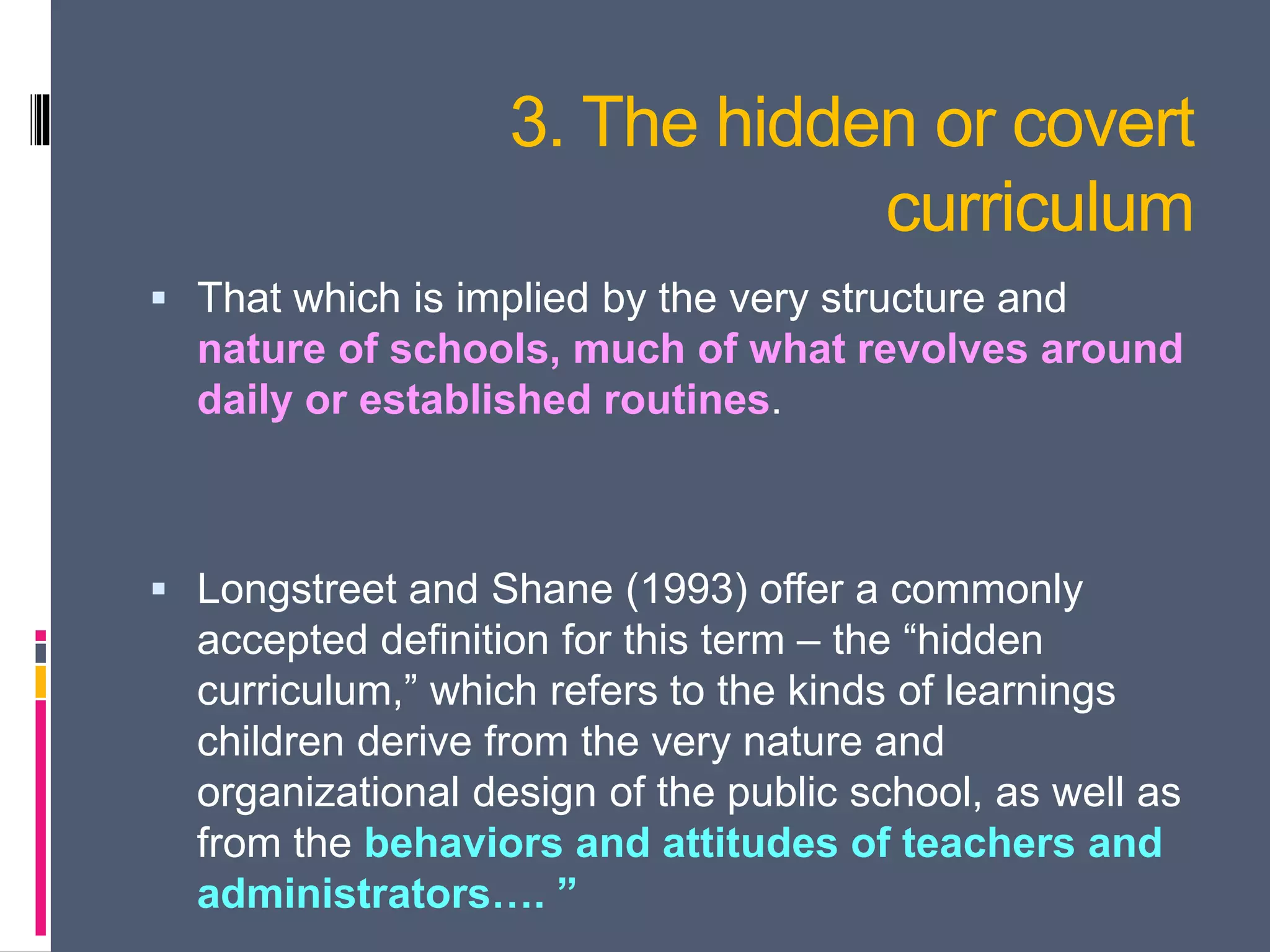

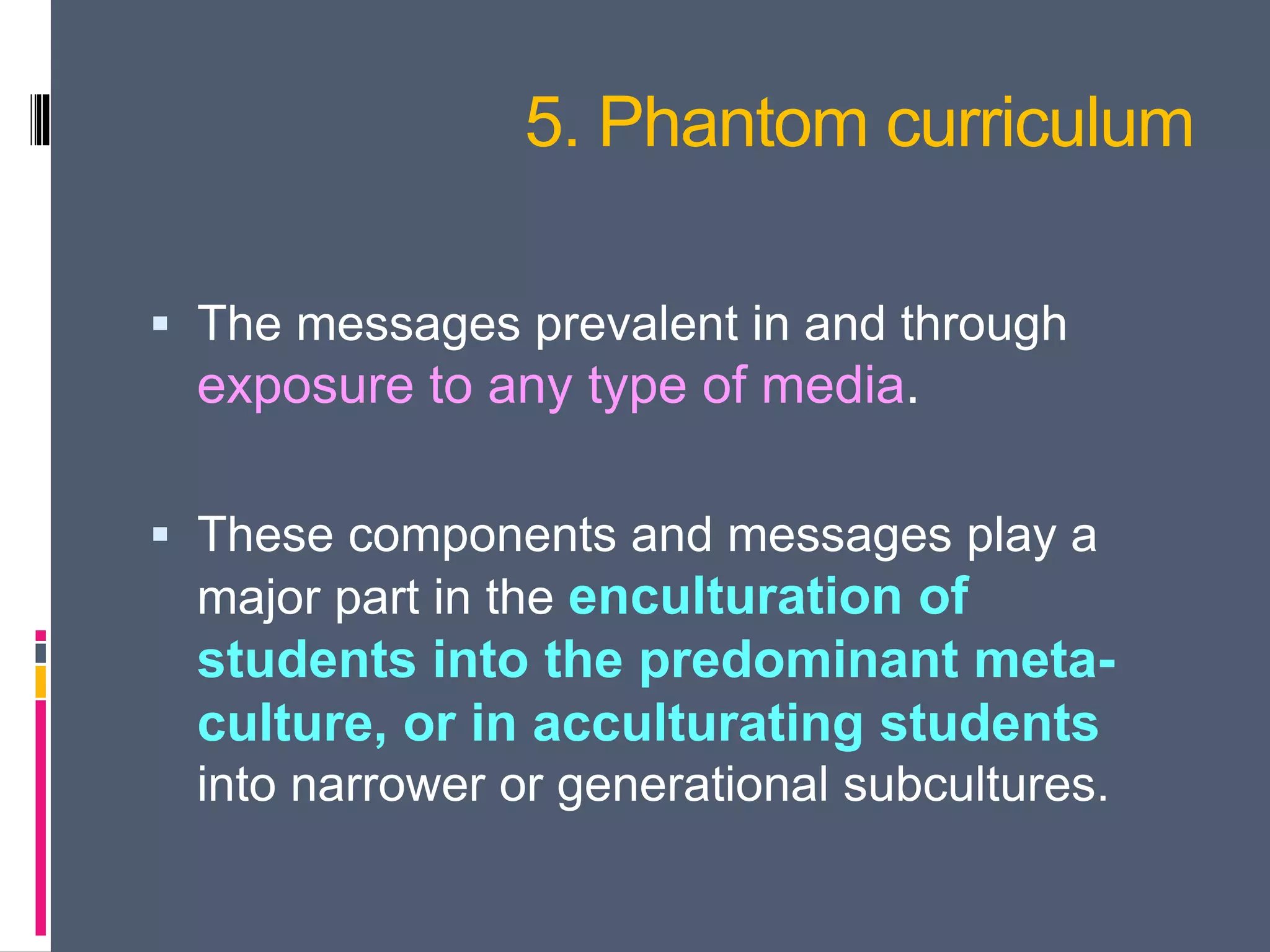
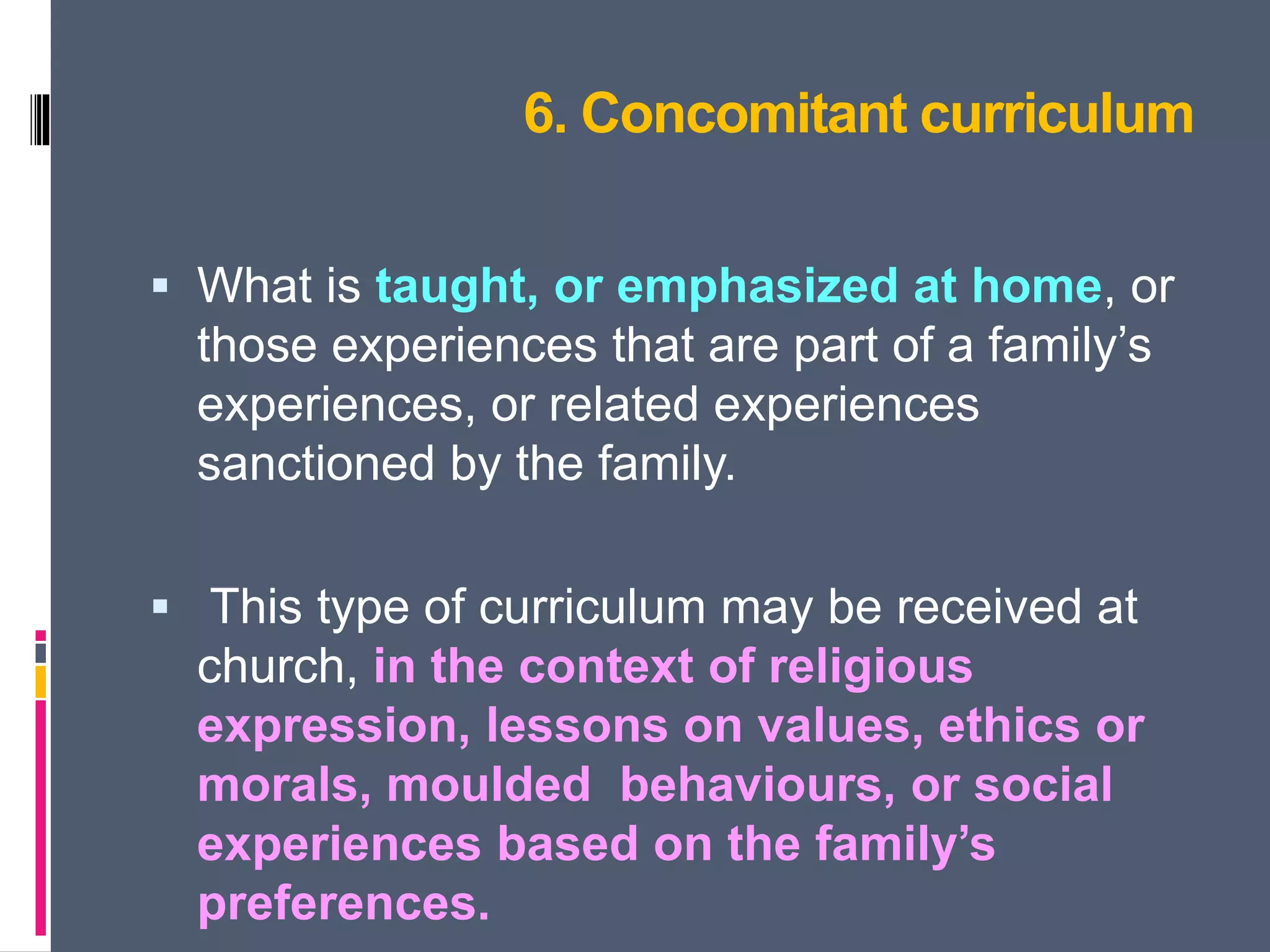
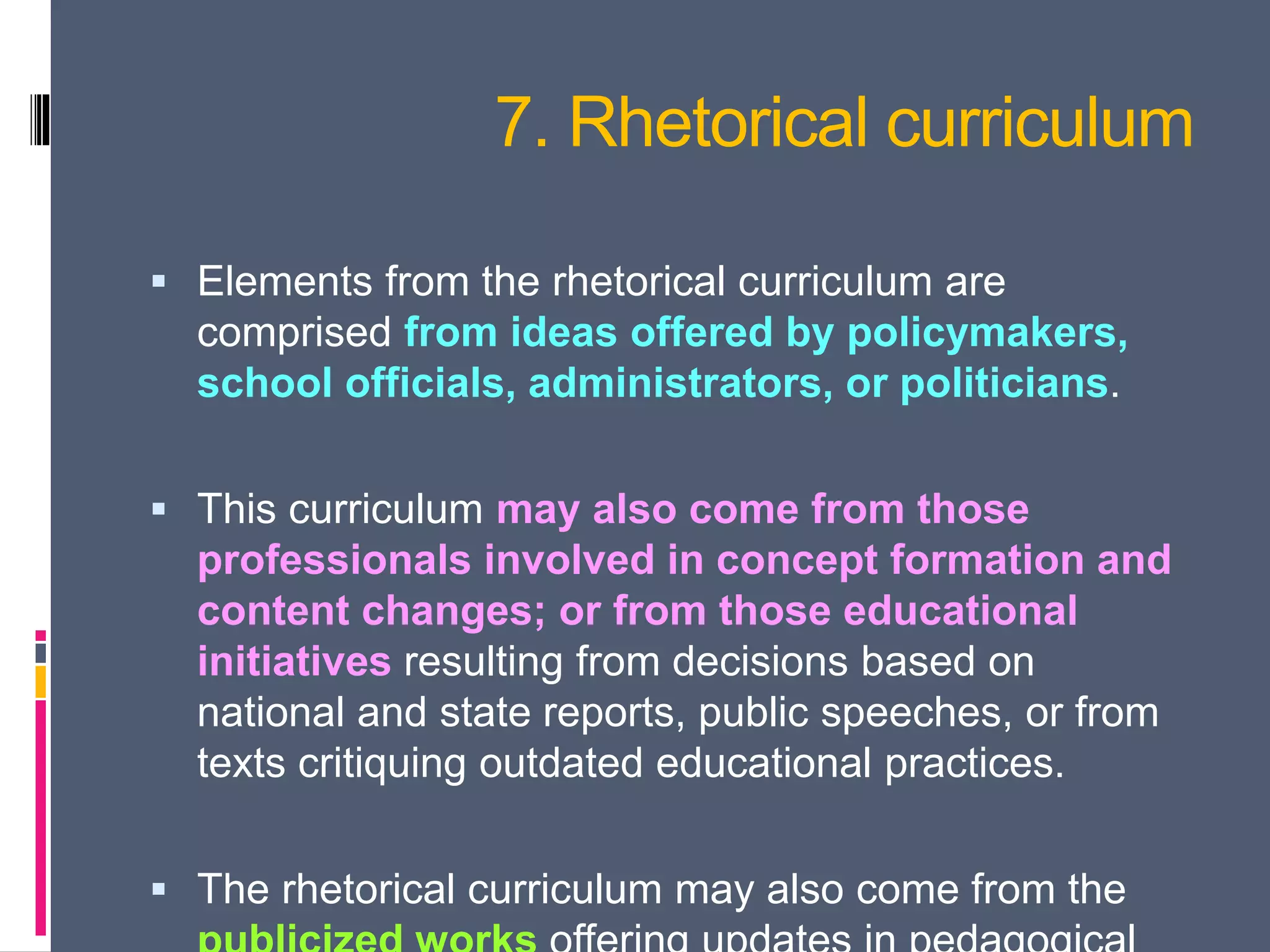
![8. The Formal Curriculum [in-use]
The formal curriculum (written or overt) comprises
those things in textbooks, and content and concepts
in the district curriculum guides. However, those
“formal” elements are frequently not taught.
The curriculum-in-use is the actual curriculum
that is delivered and presented by each
teacher.](https://image.slidesharecdn.com/bndqtlqxsime95hbrmng-signature-1dadeffc77c78b85cf6015e39f5879573c51c156b27266d8c8d9b0aaa1c65142-poli-201211113347/75/Cuiculum-development-concept-44-2048.jpg)
